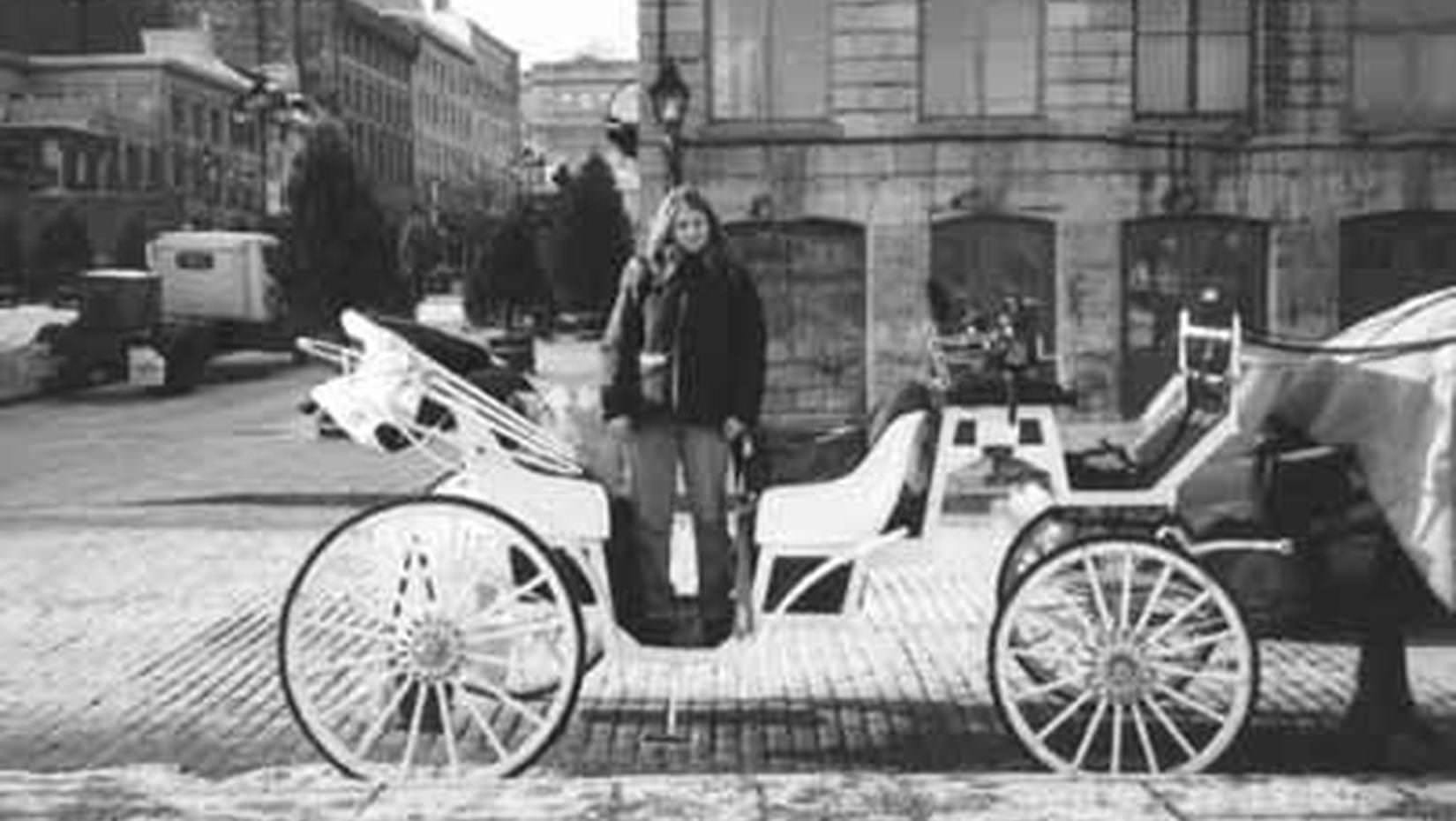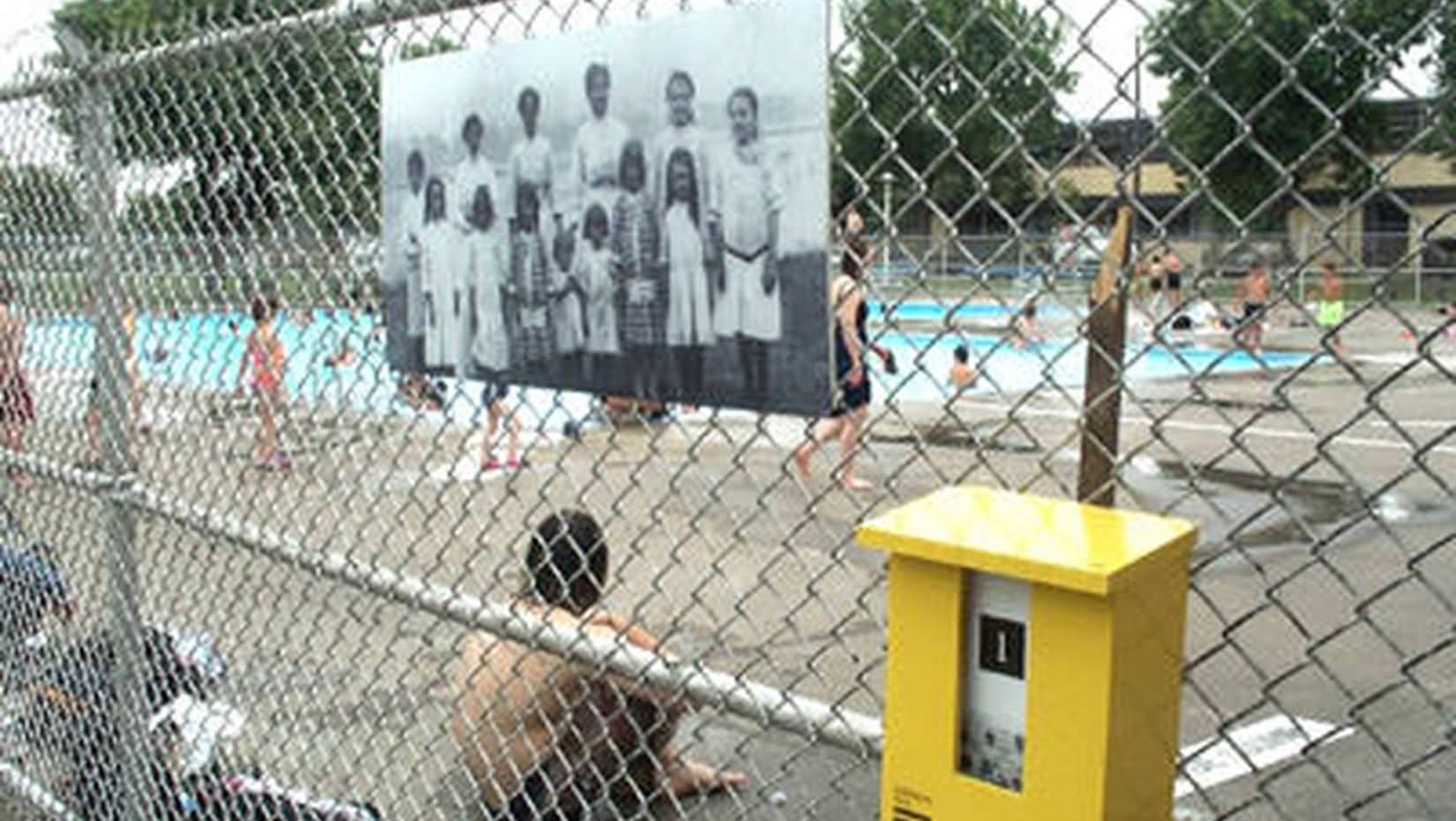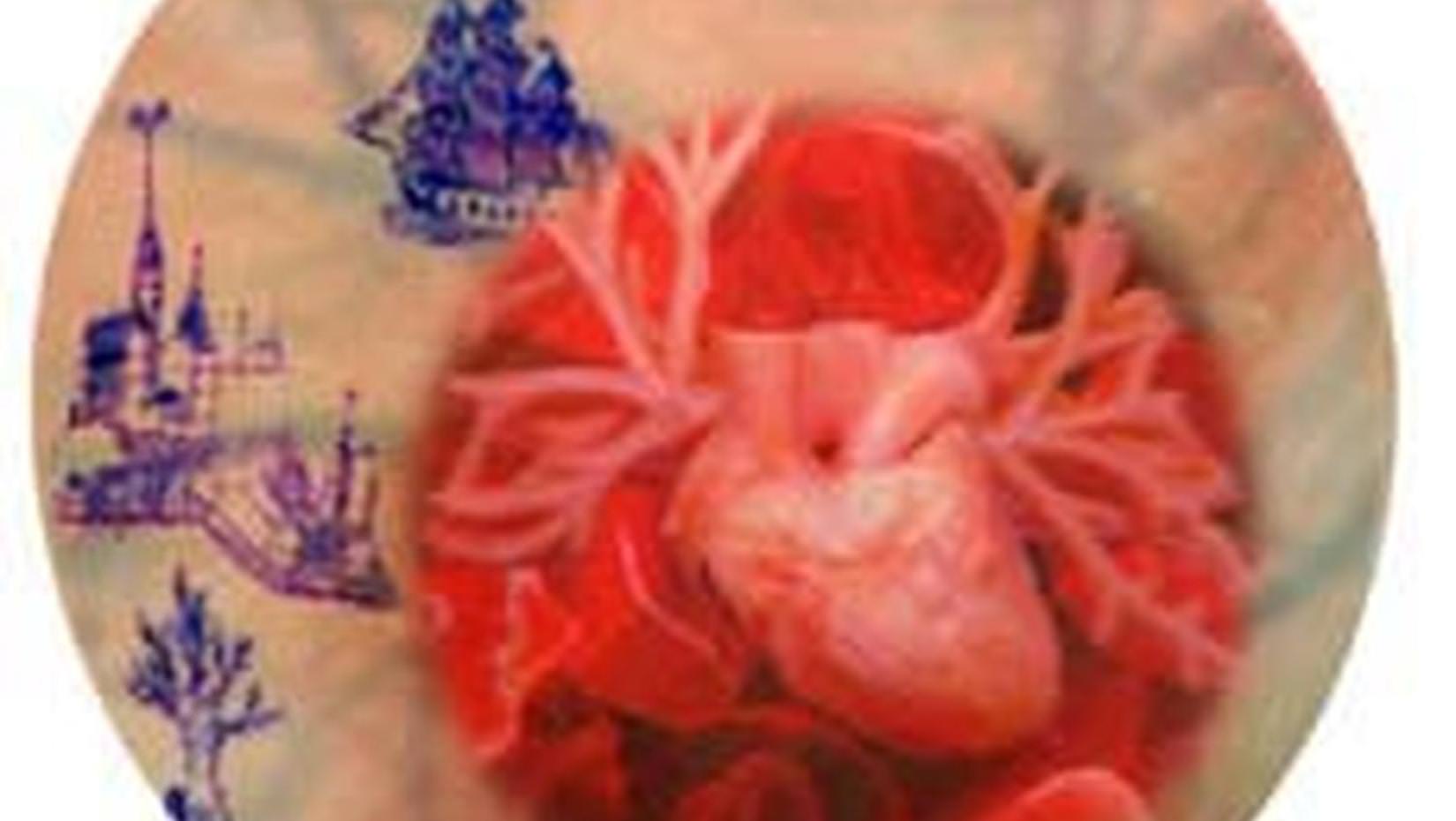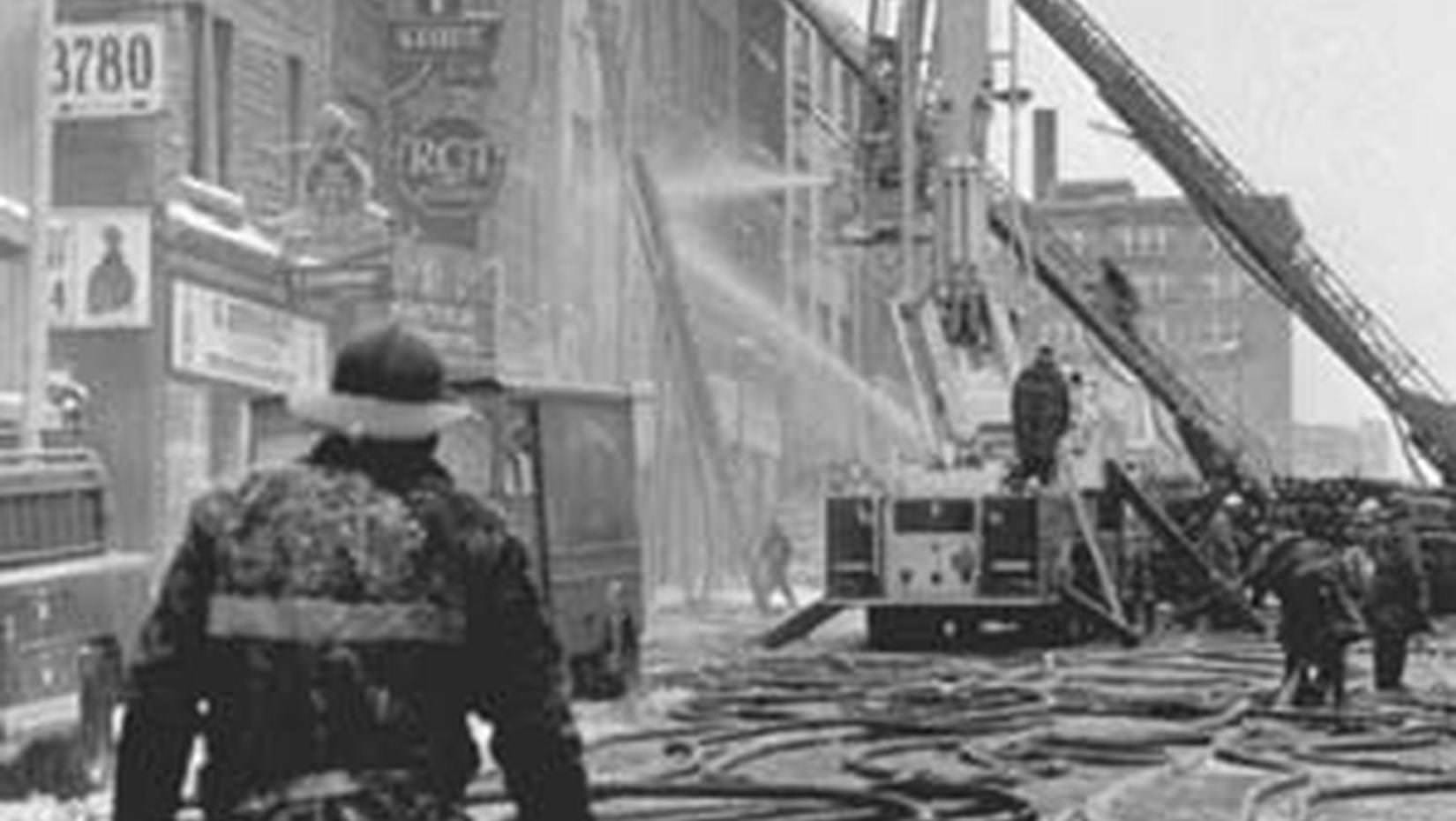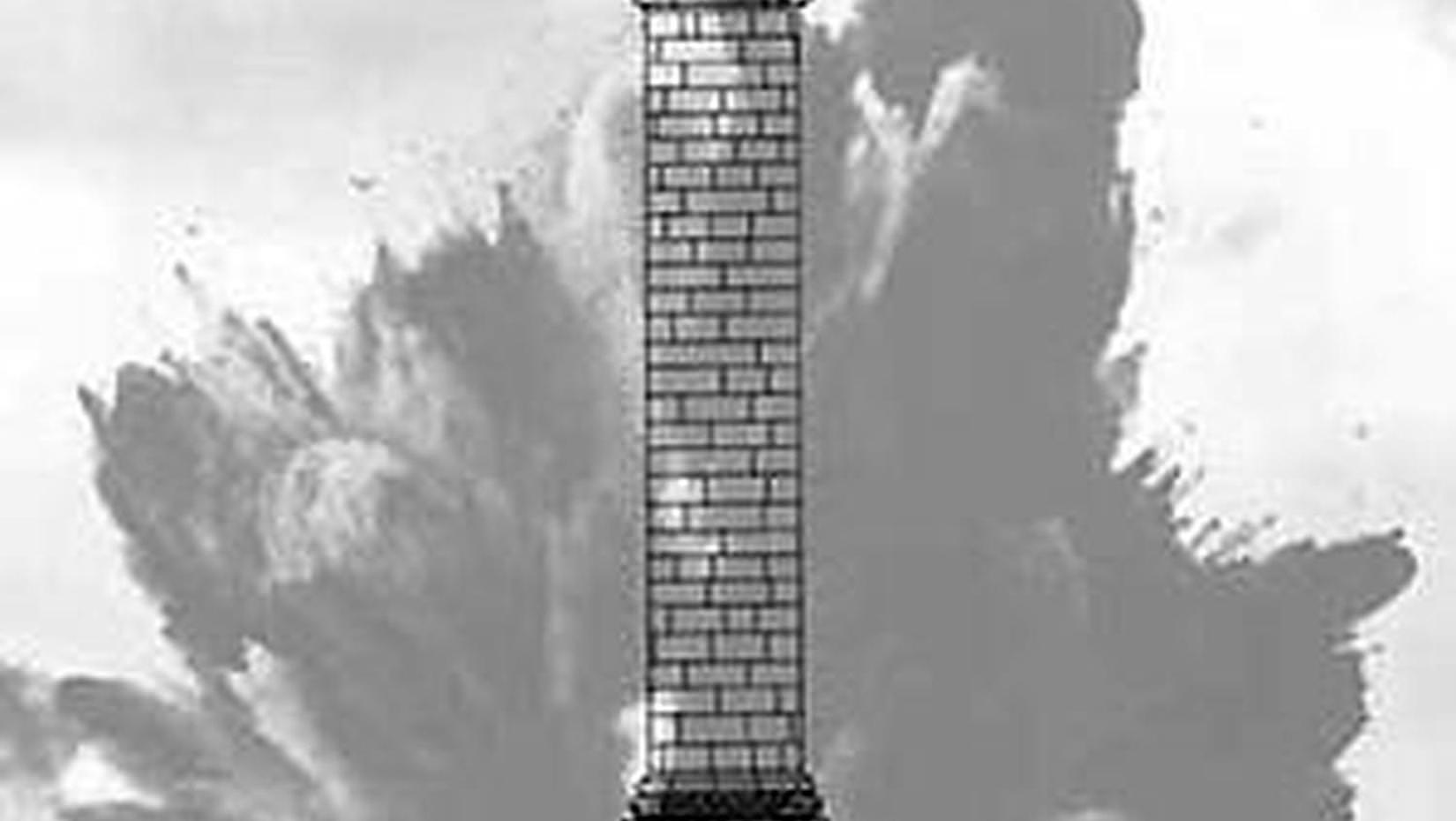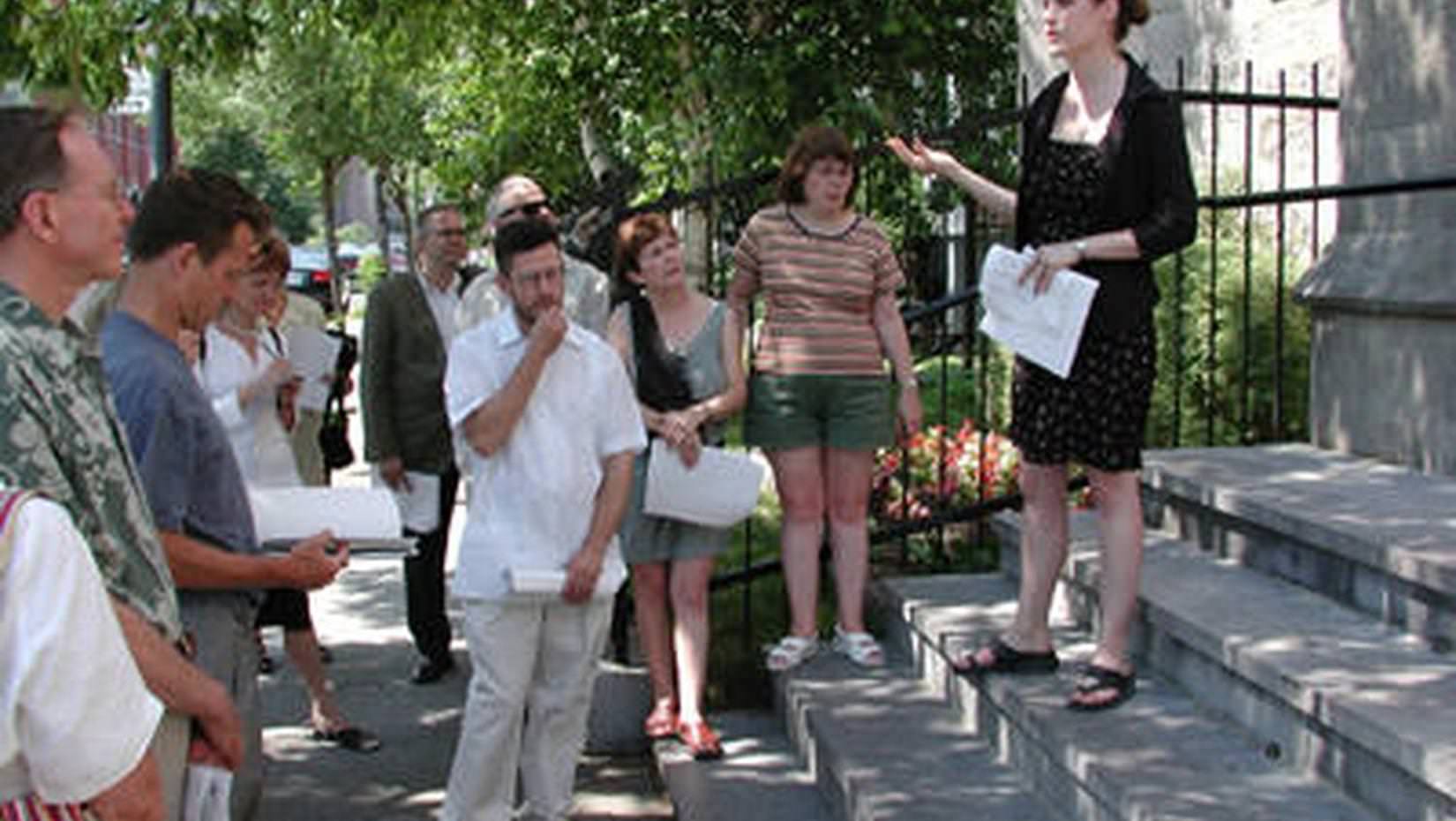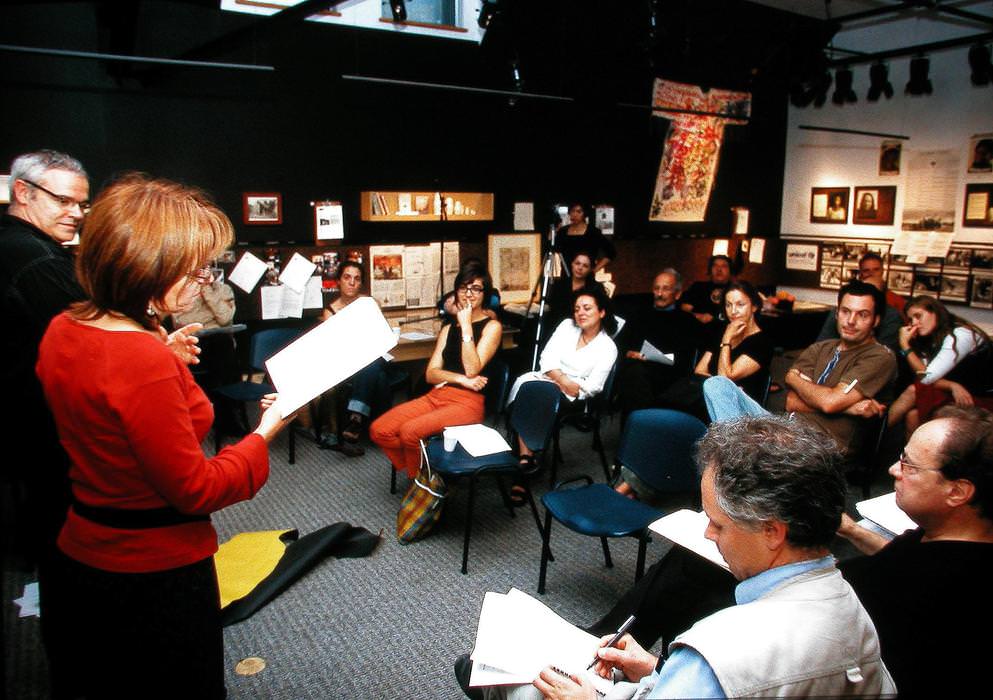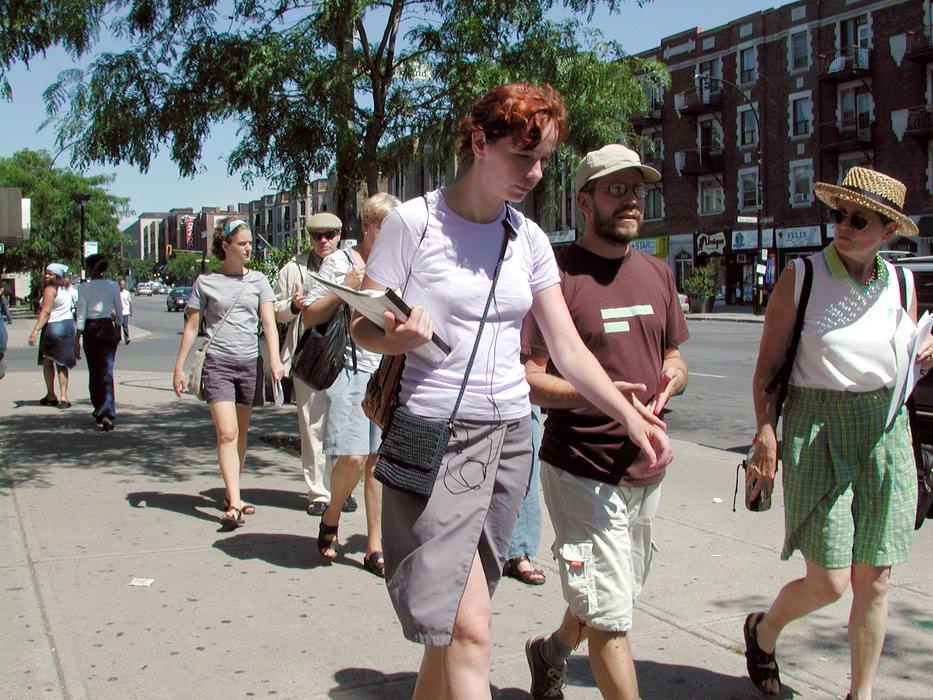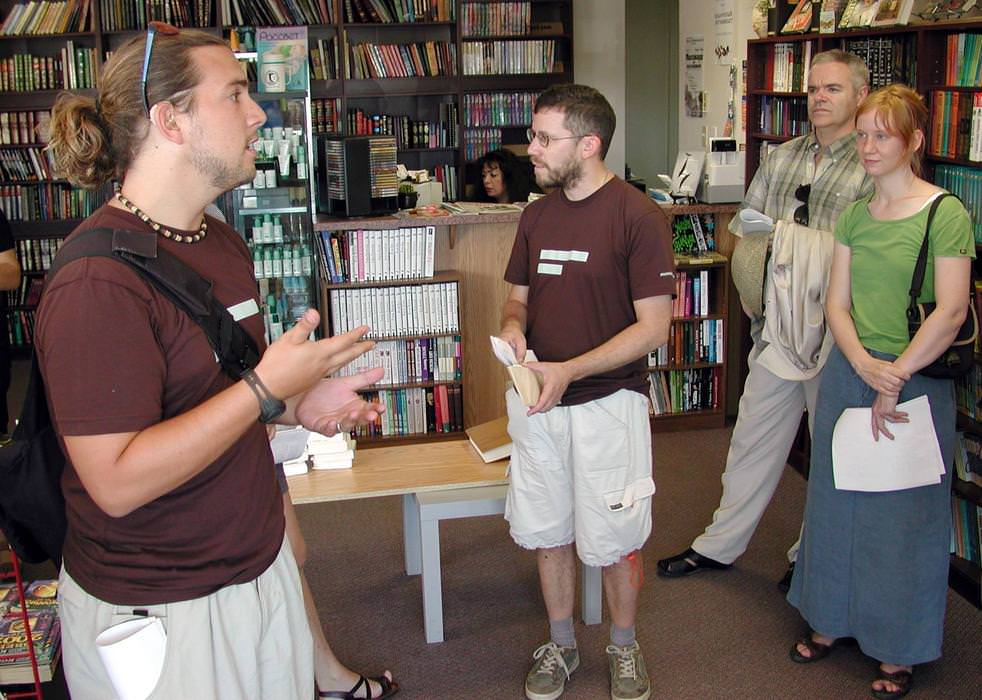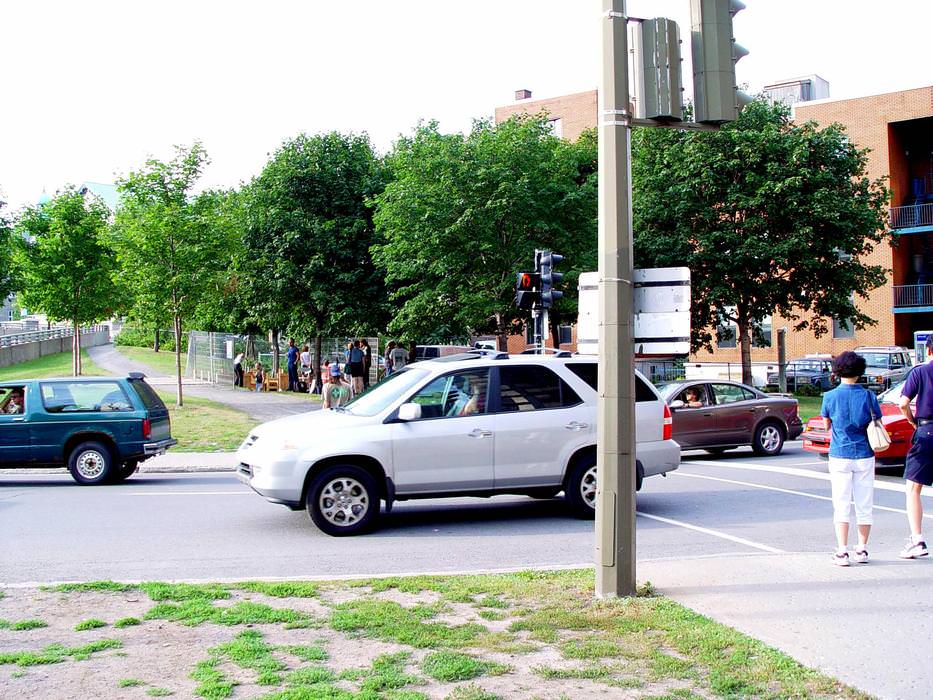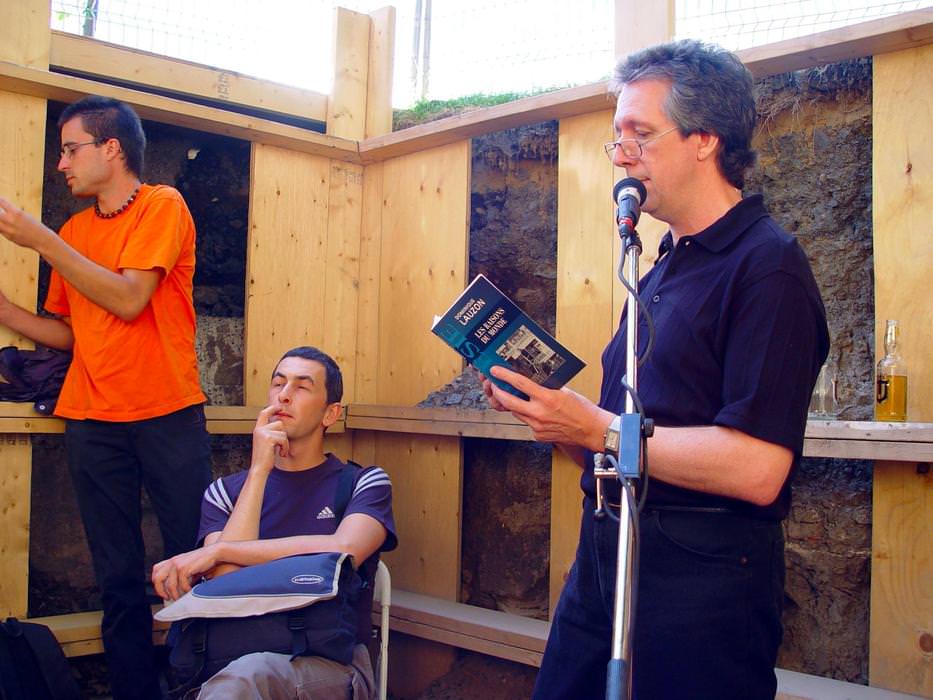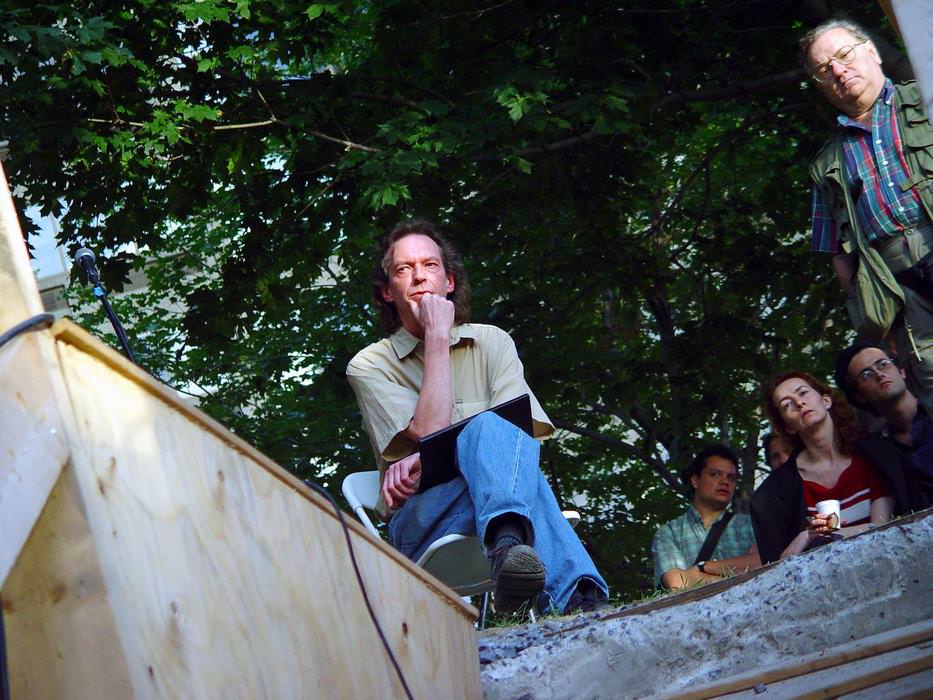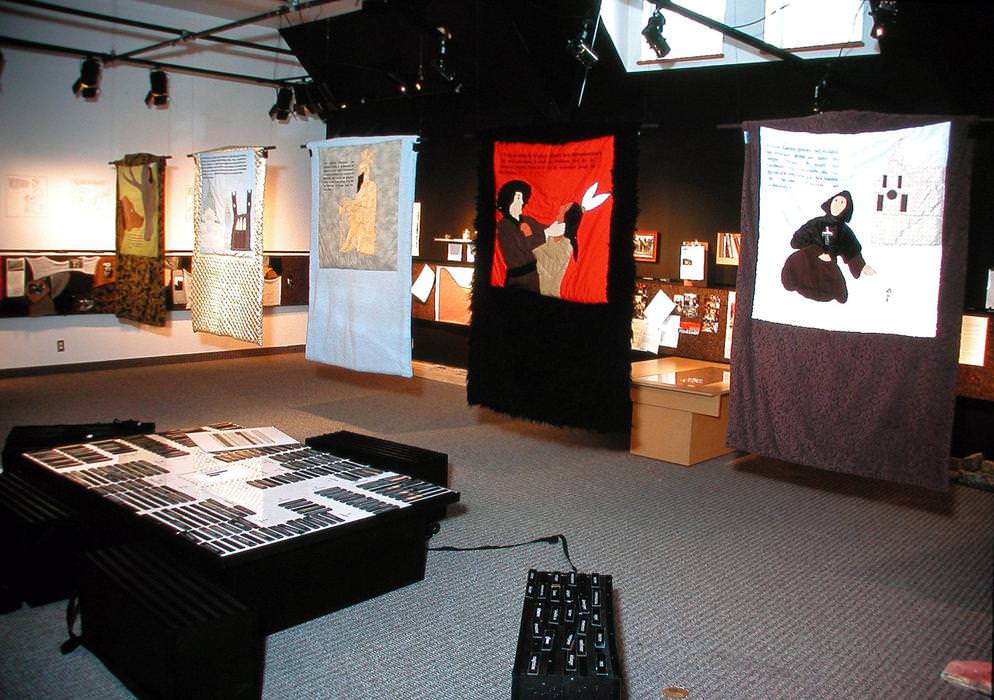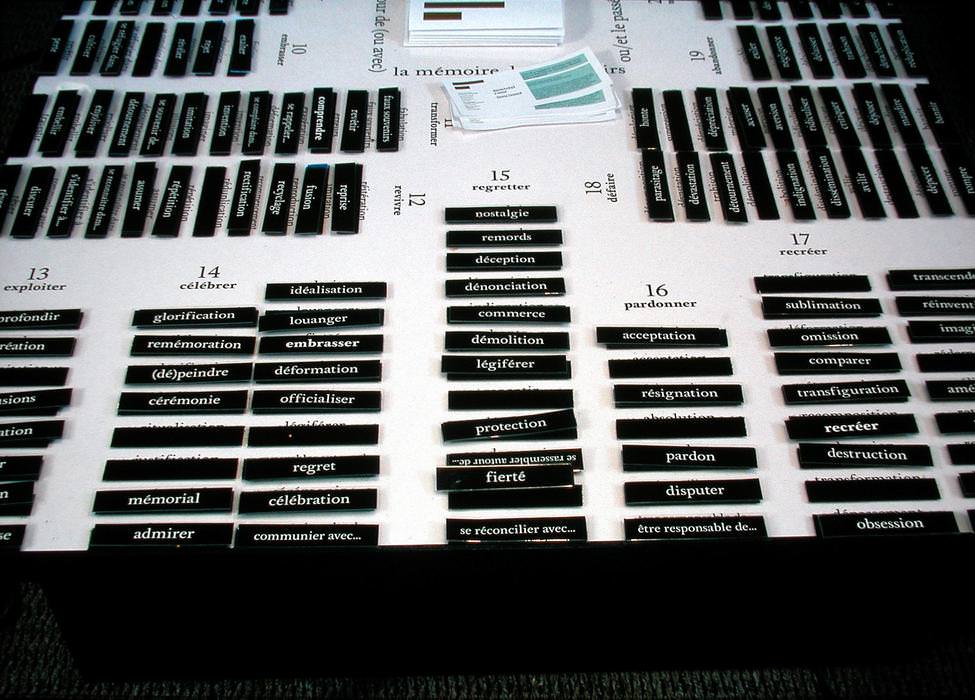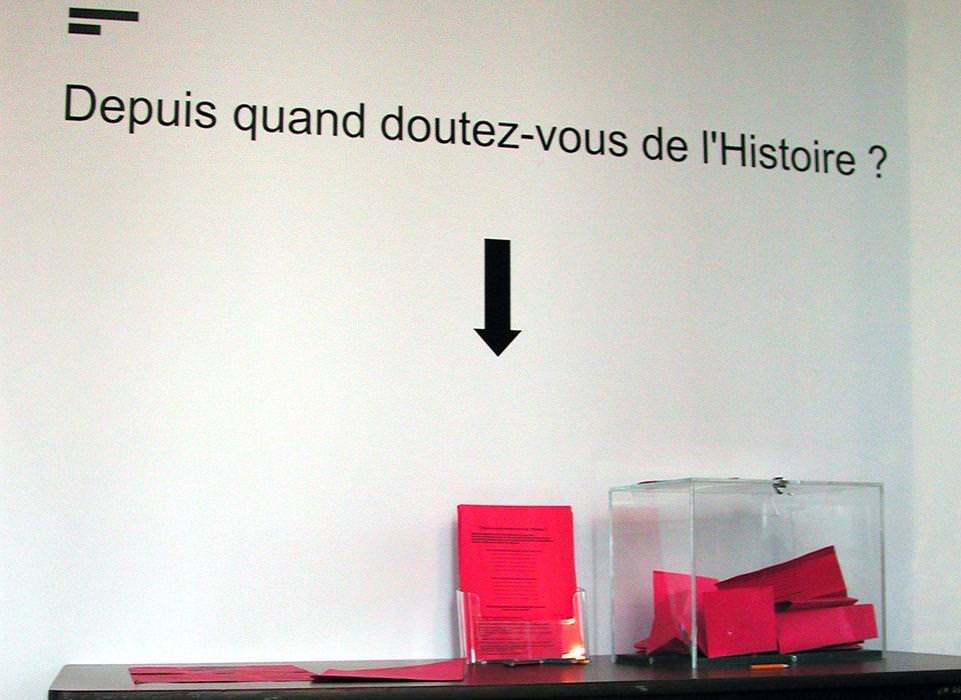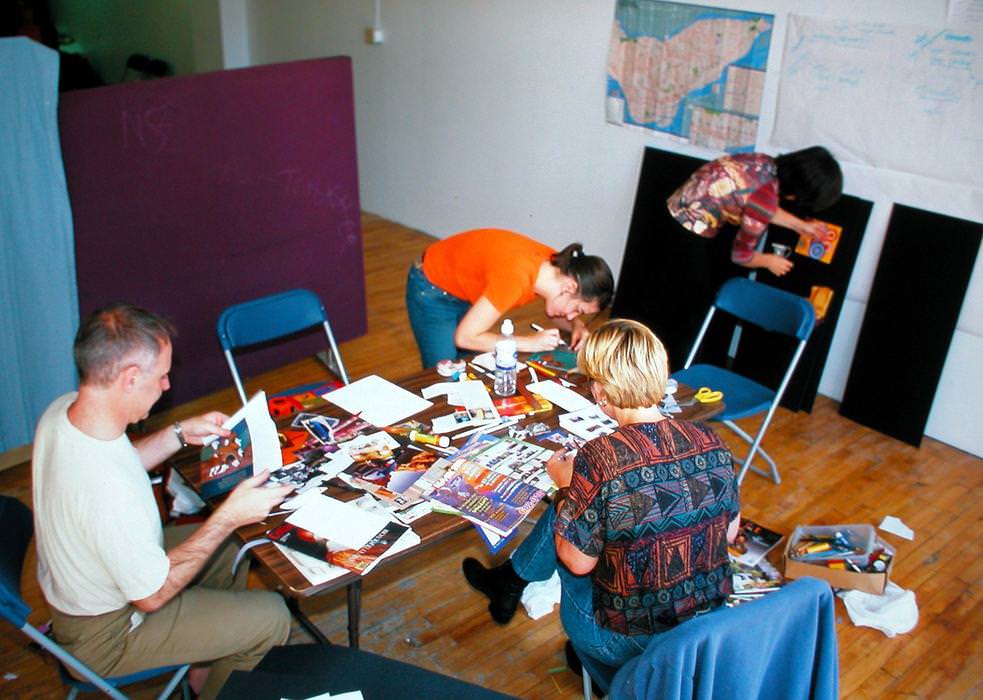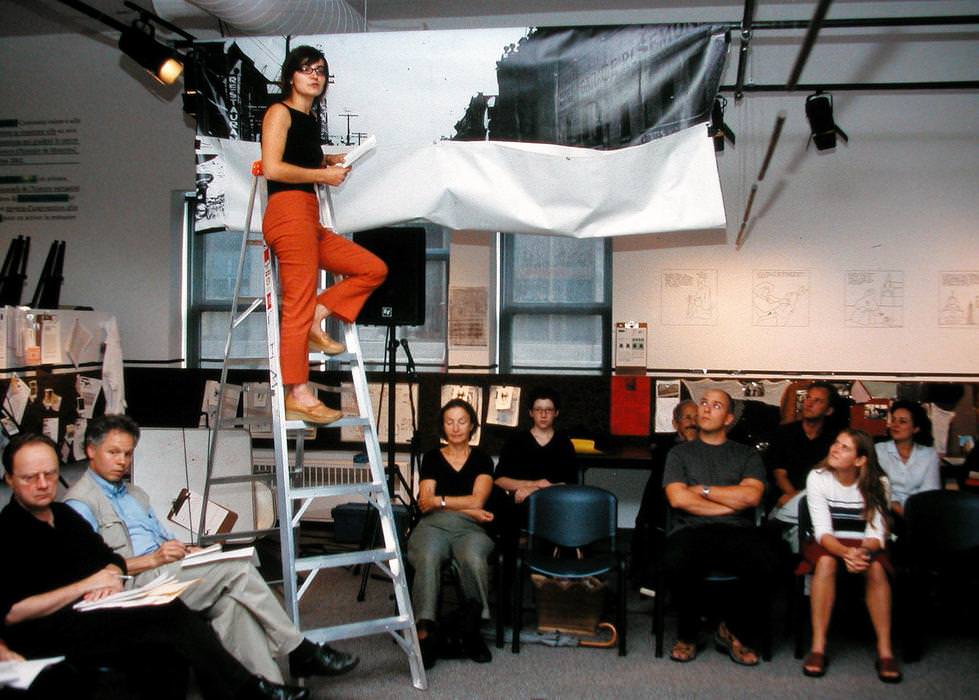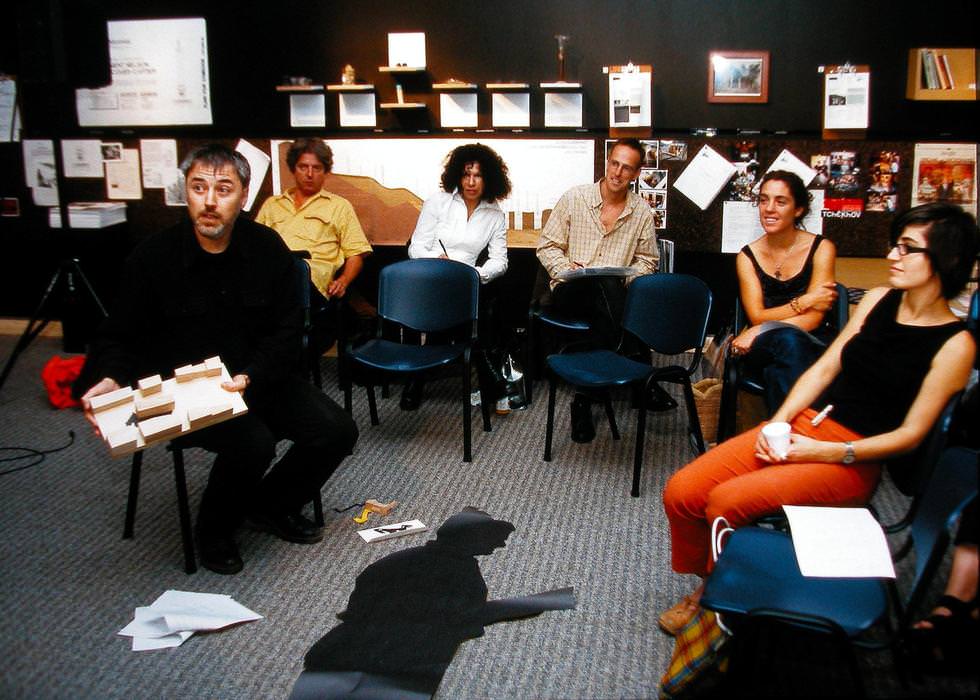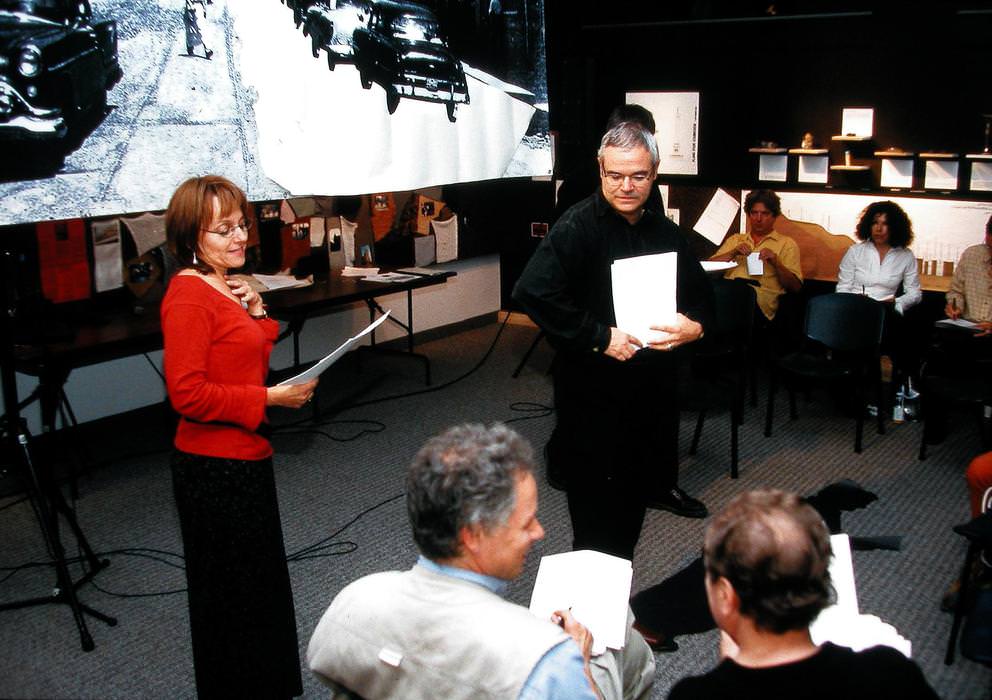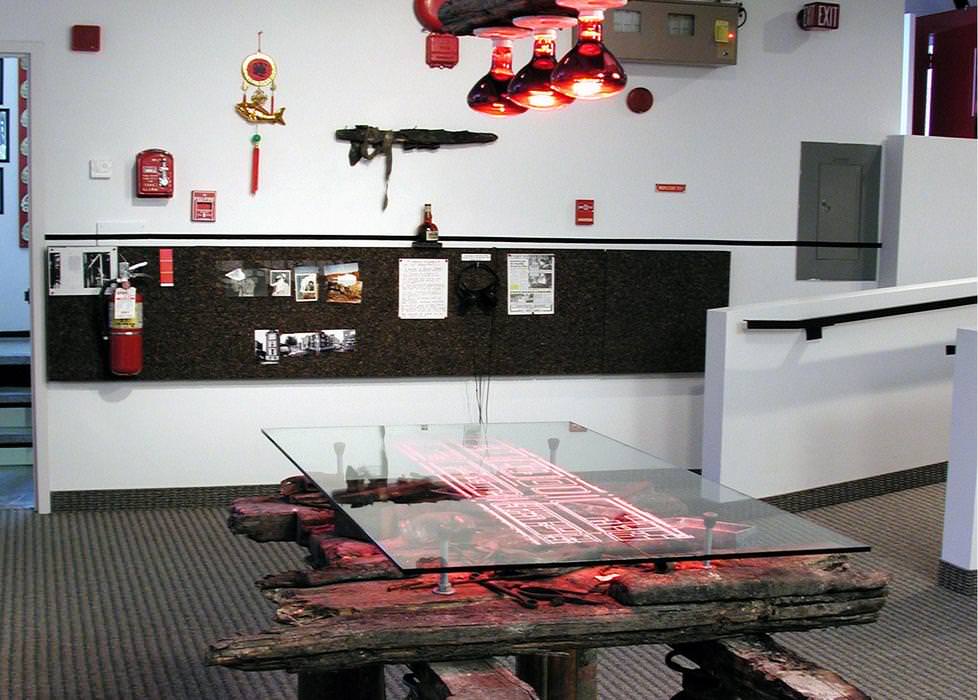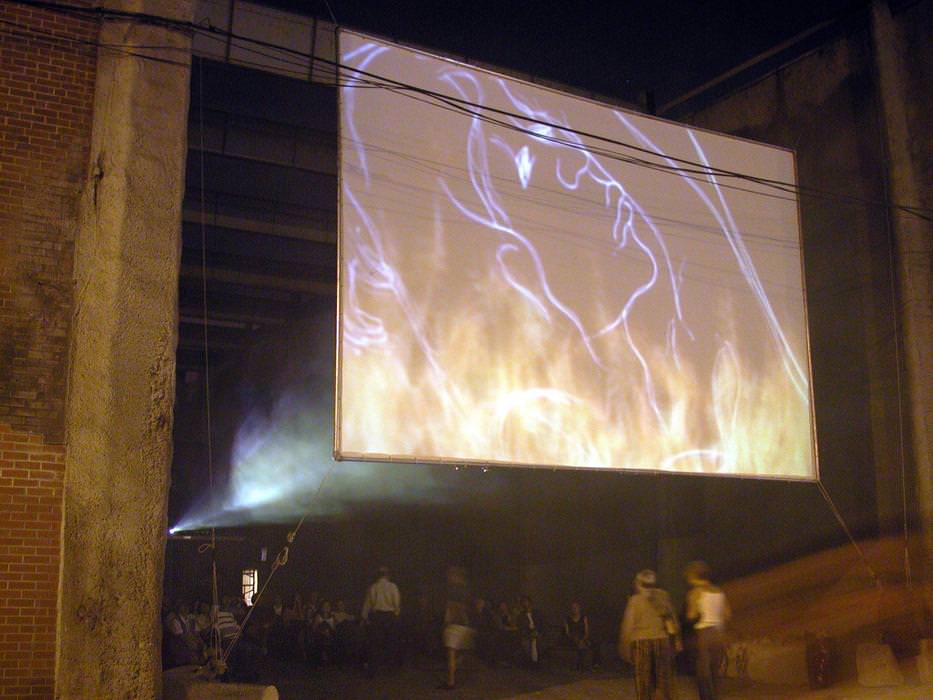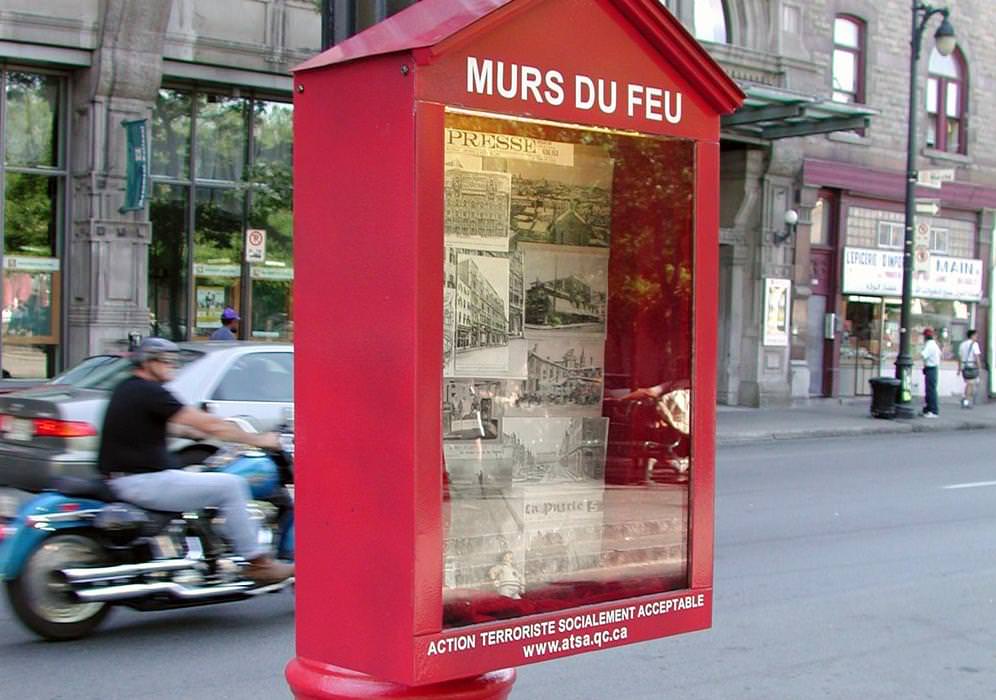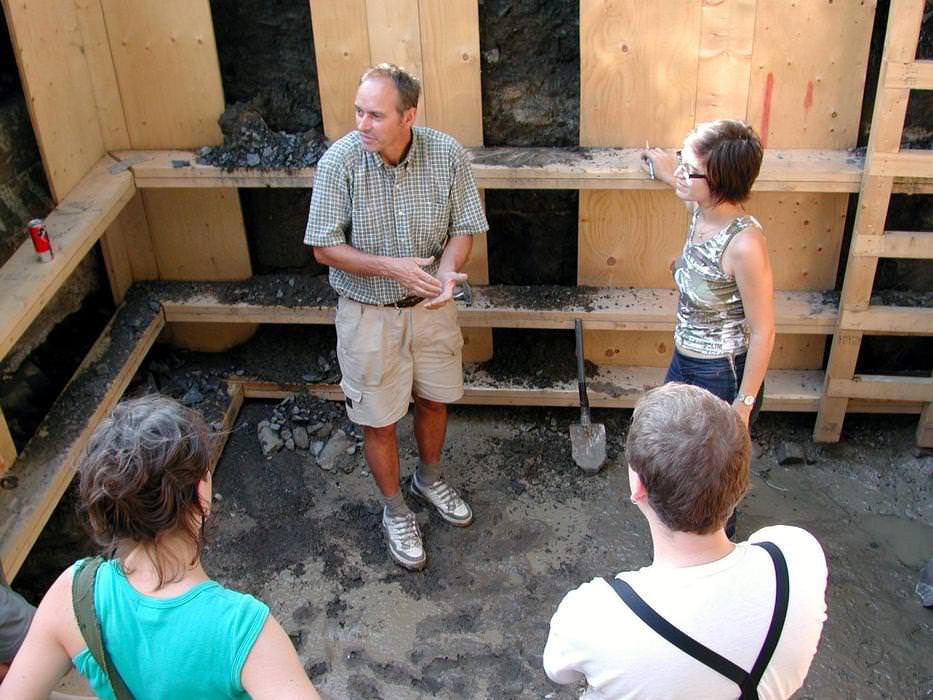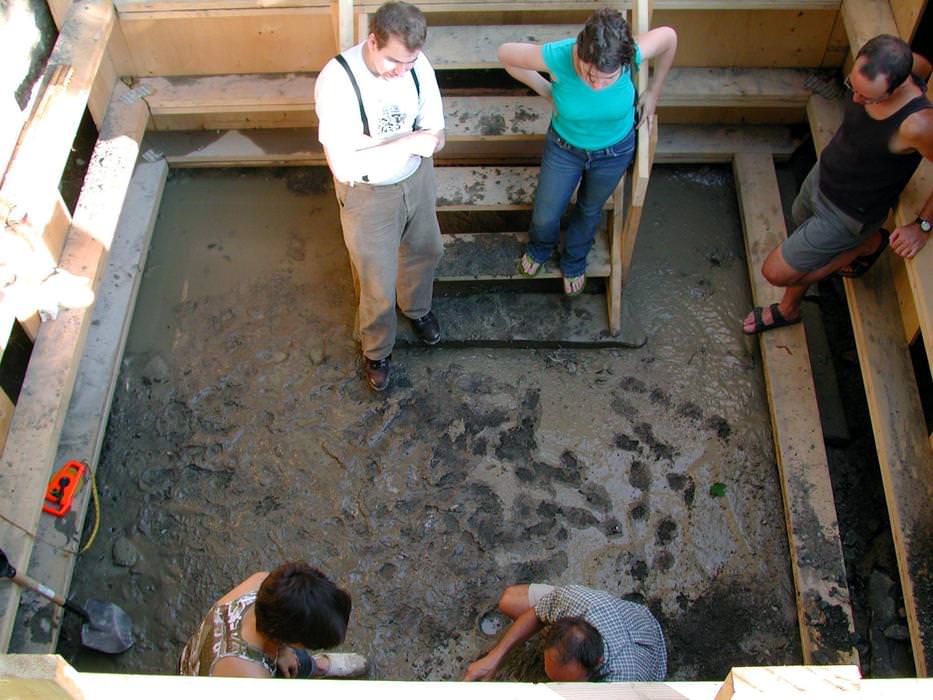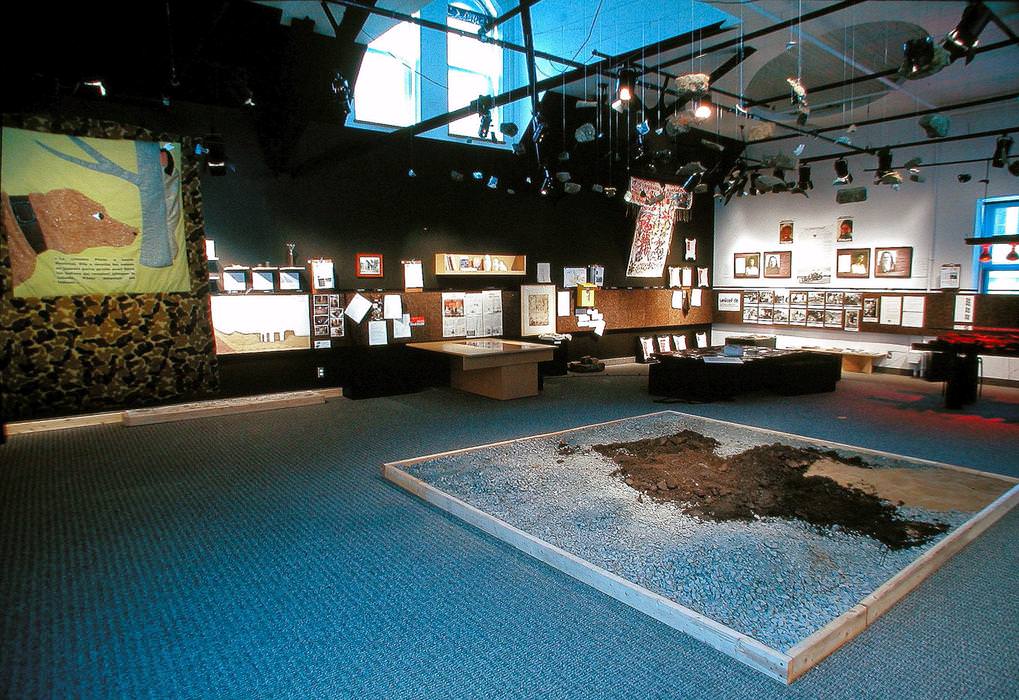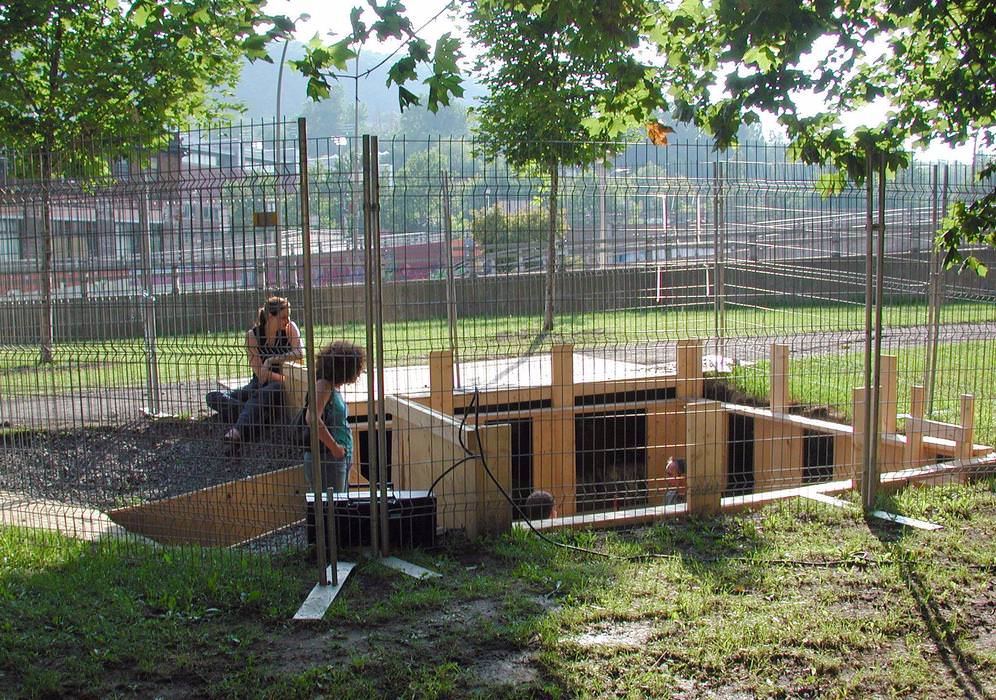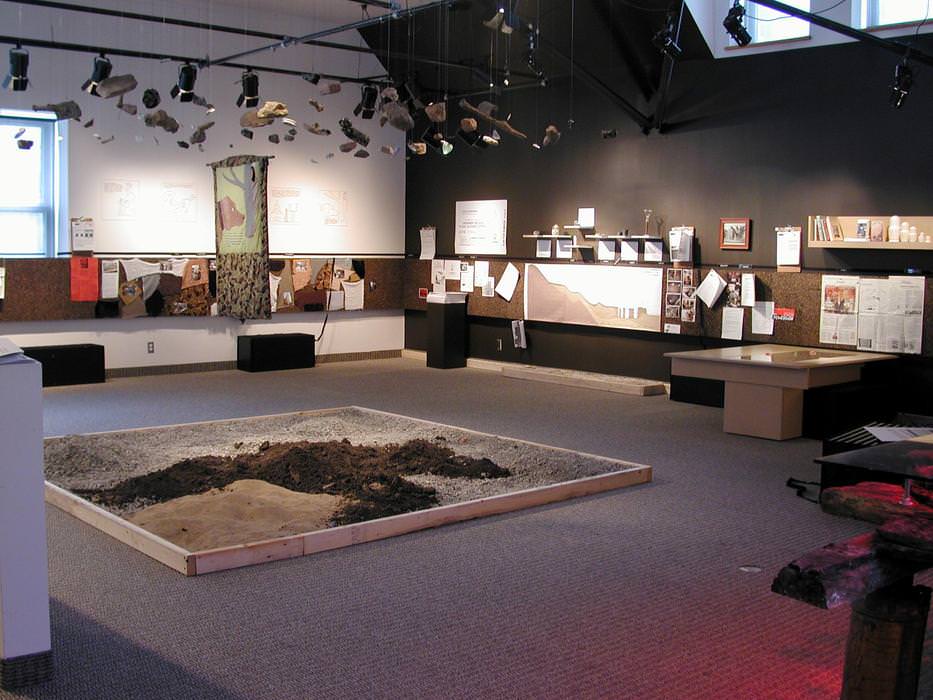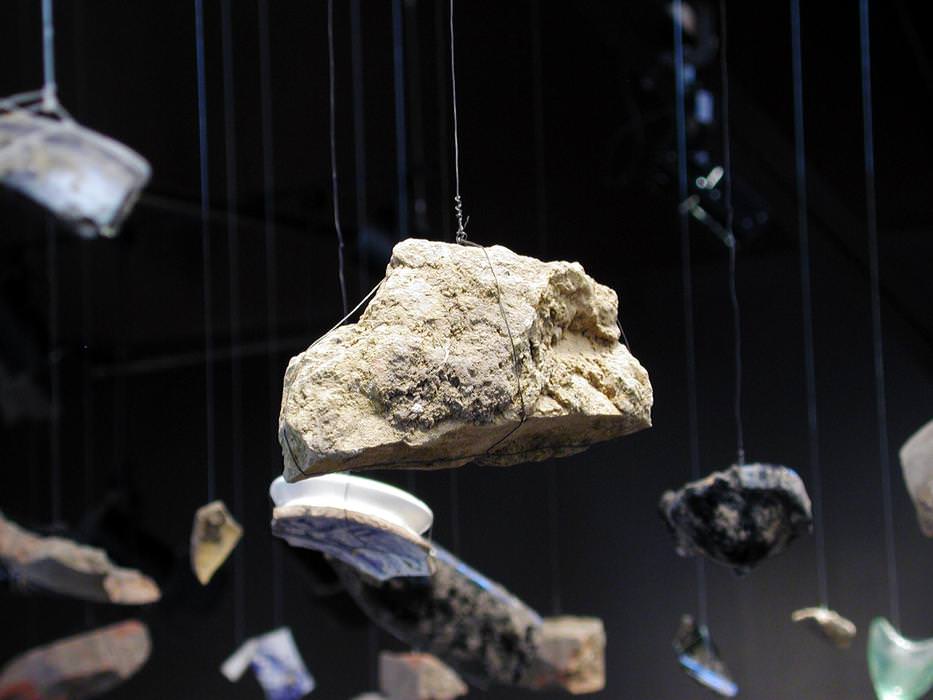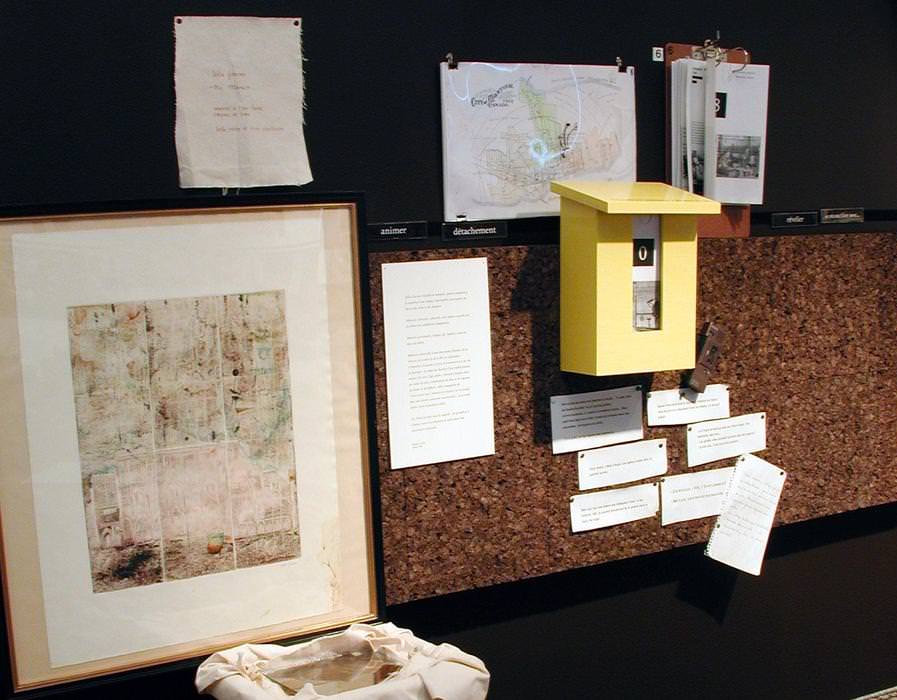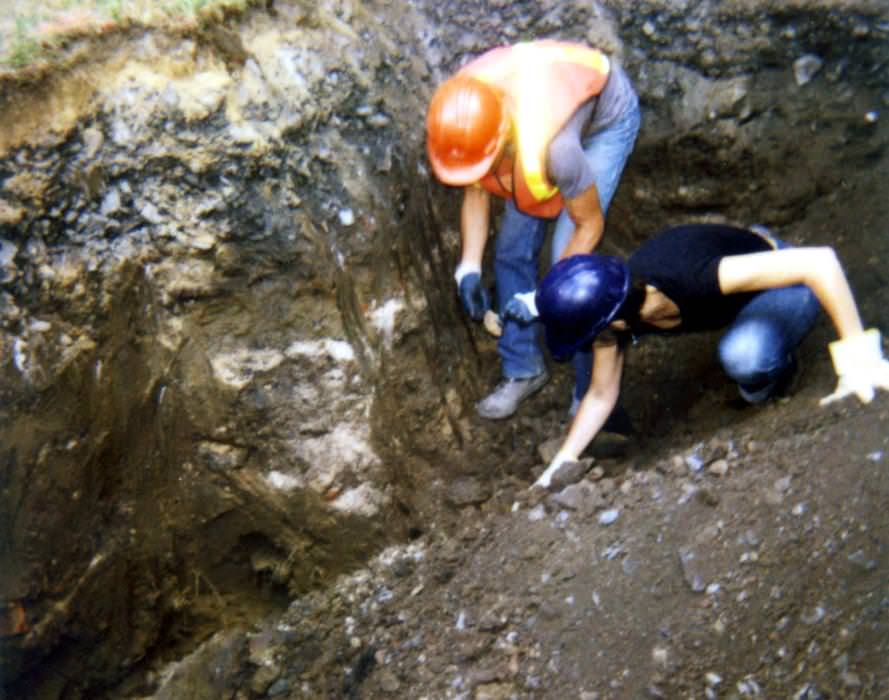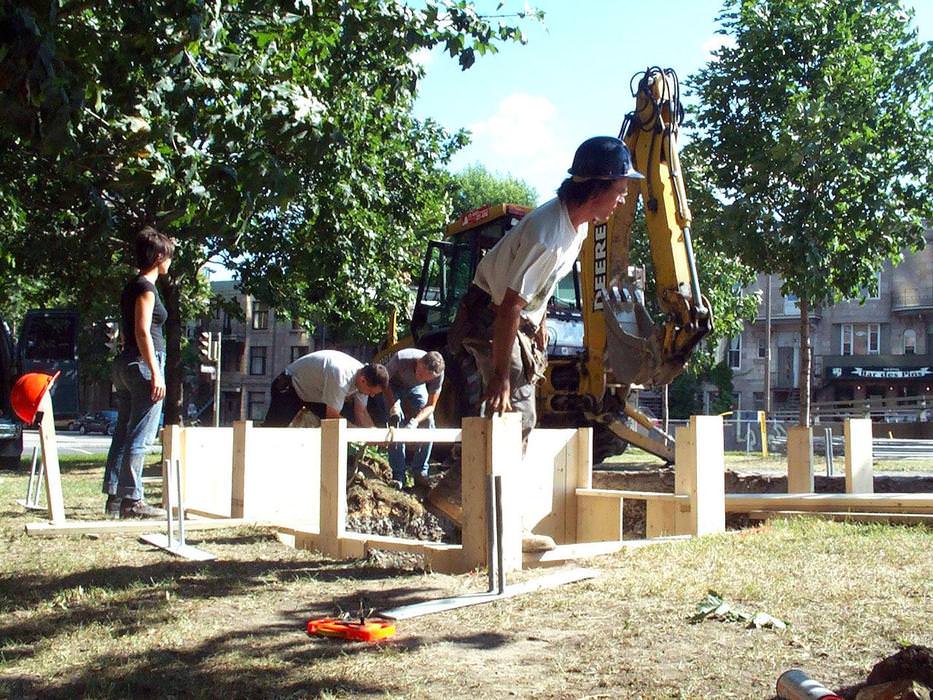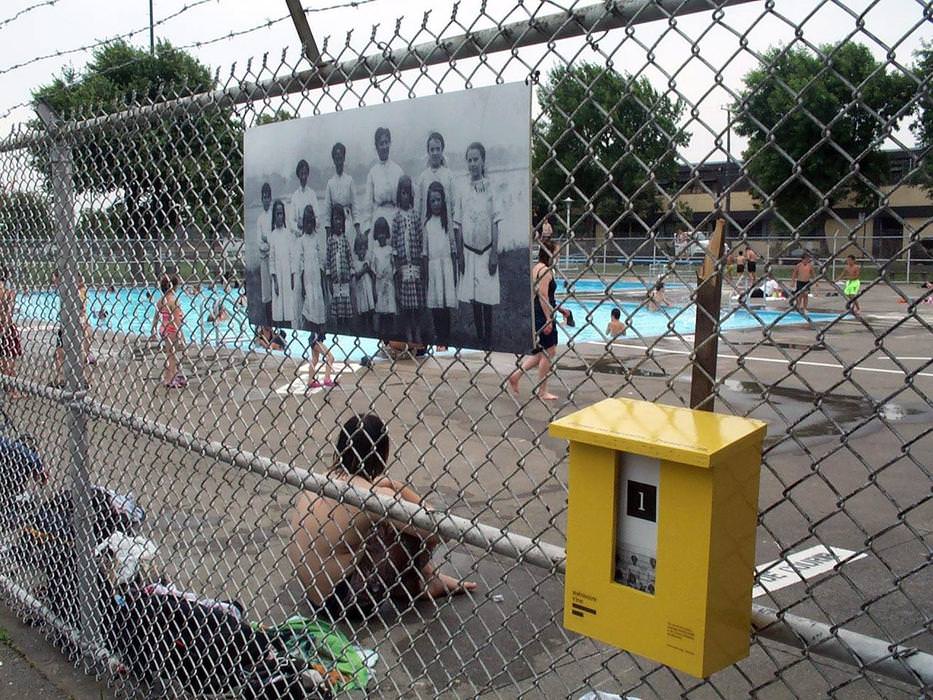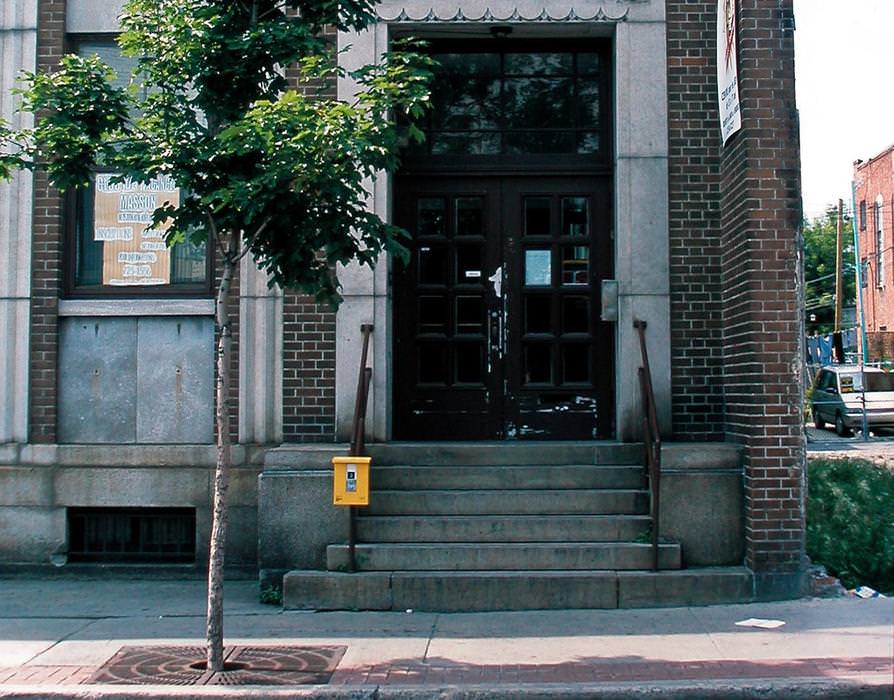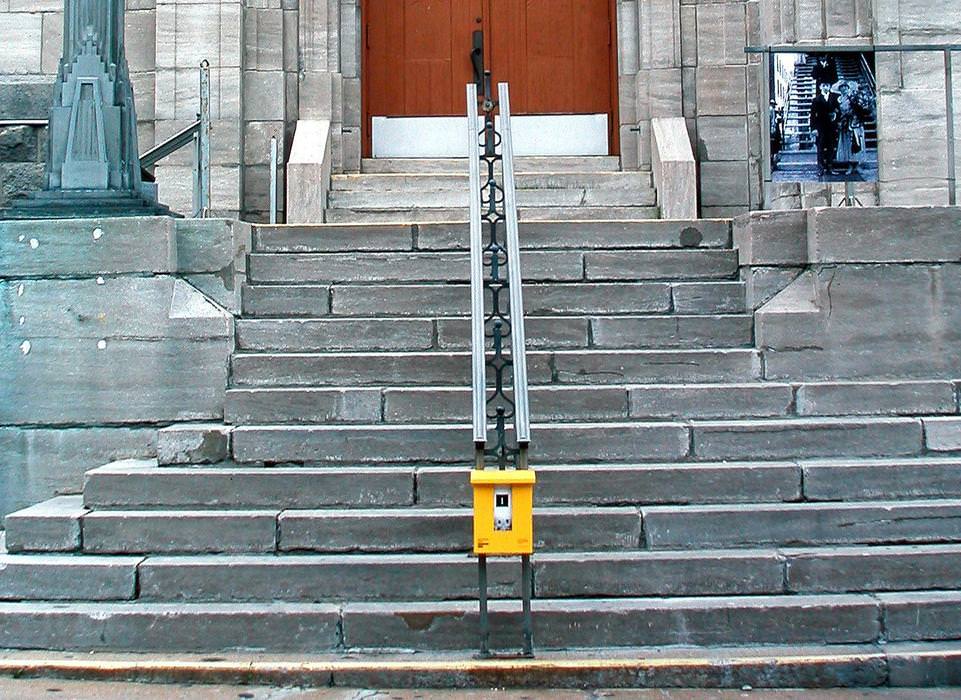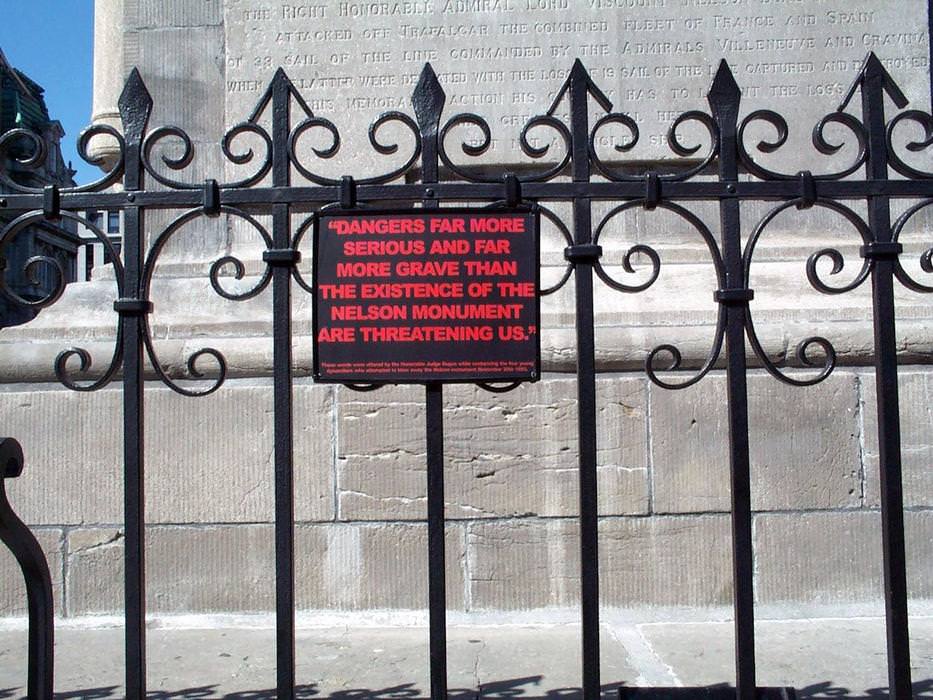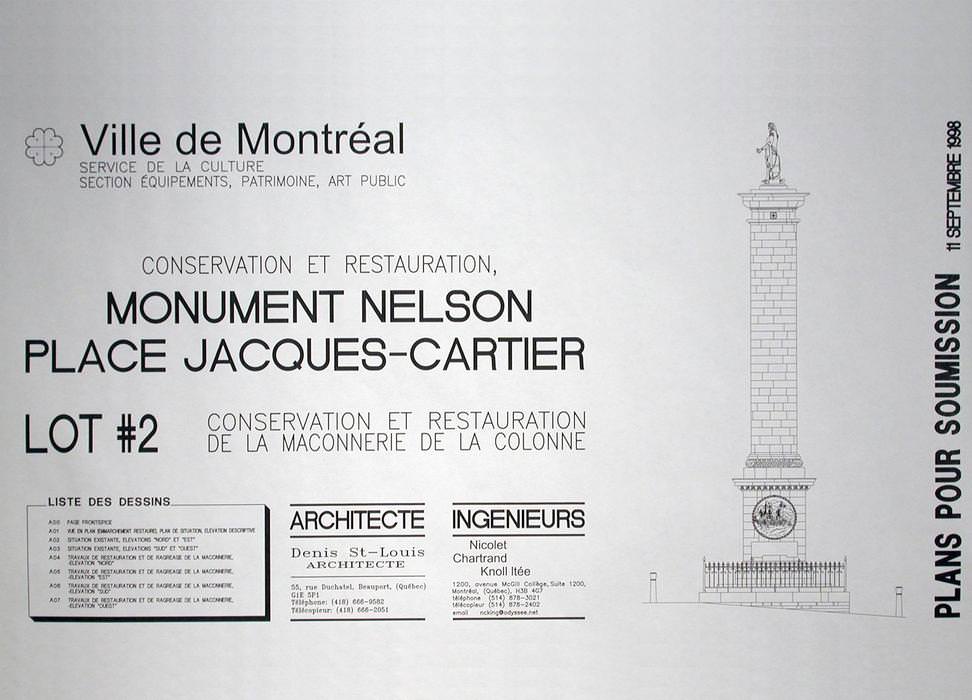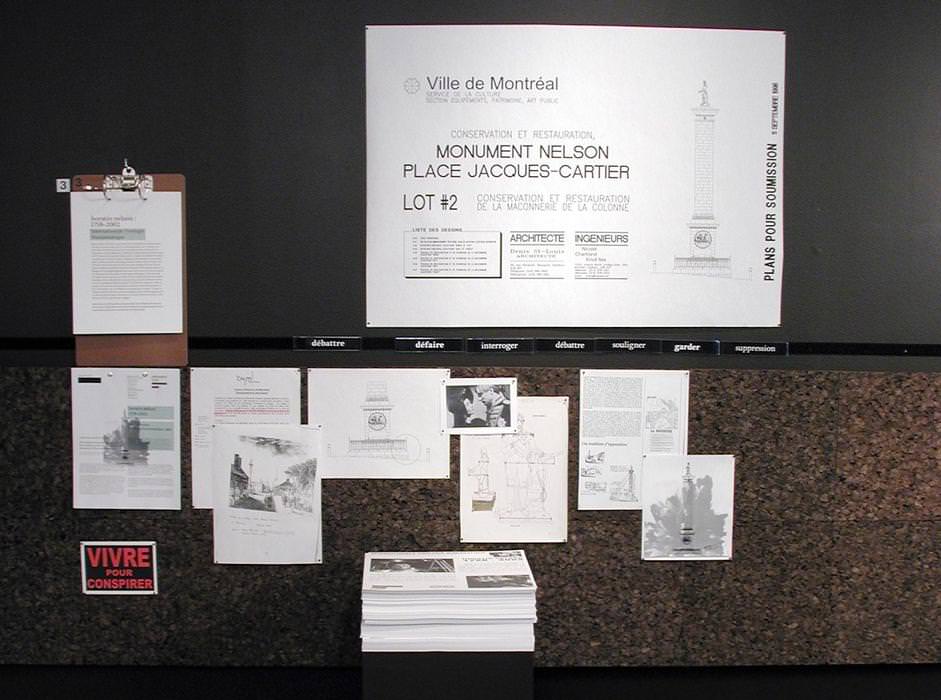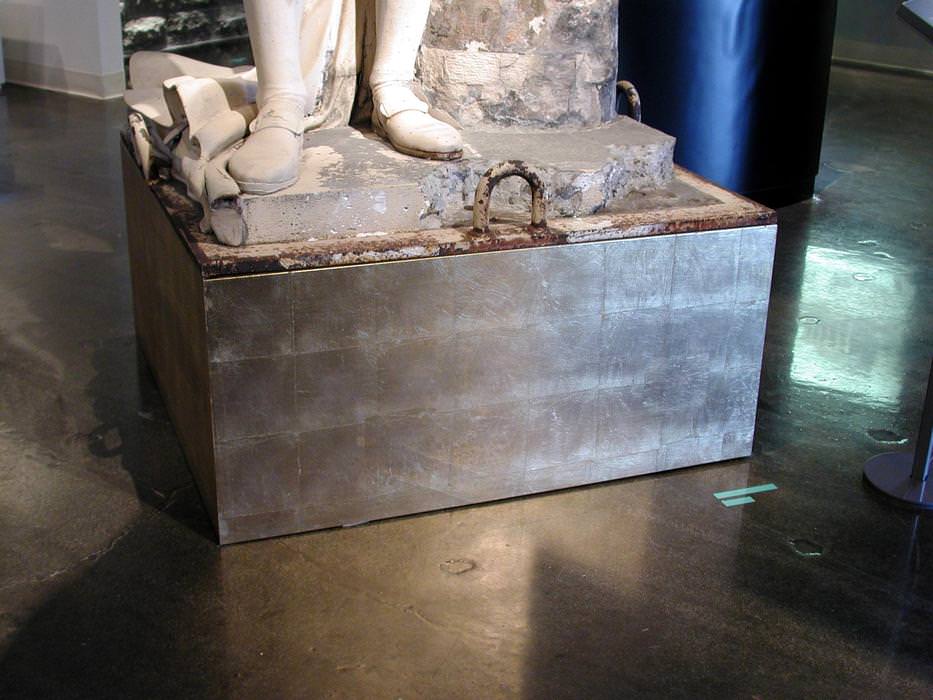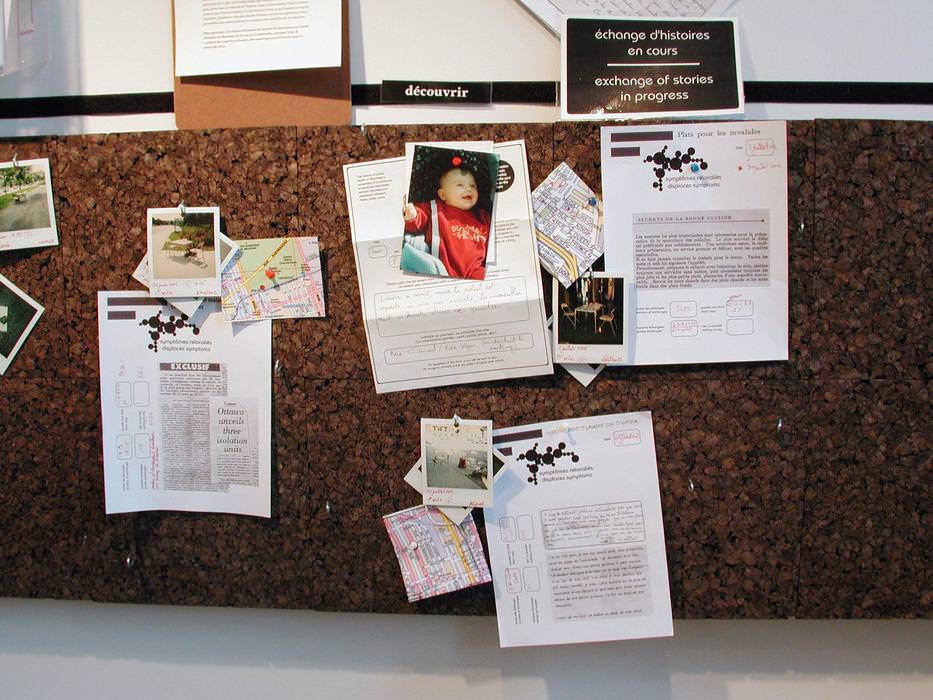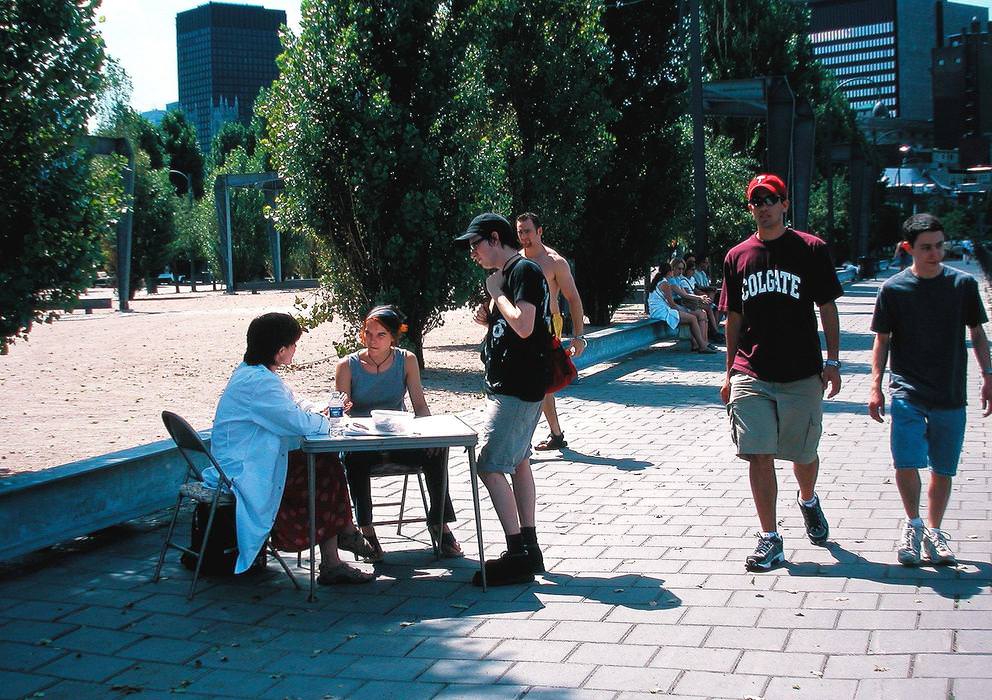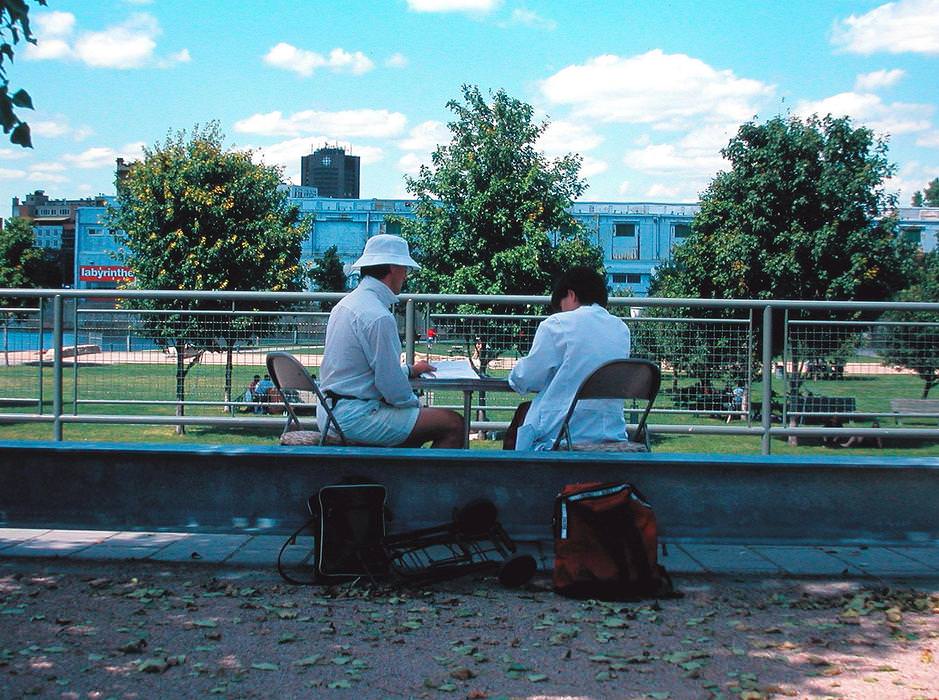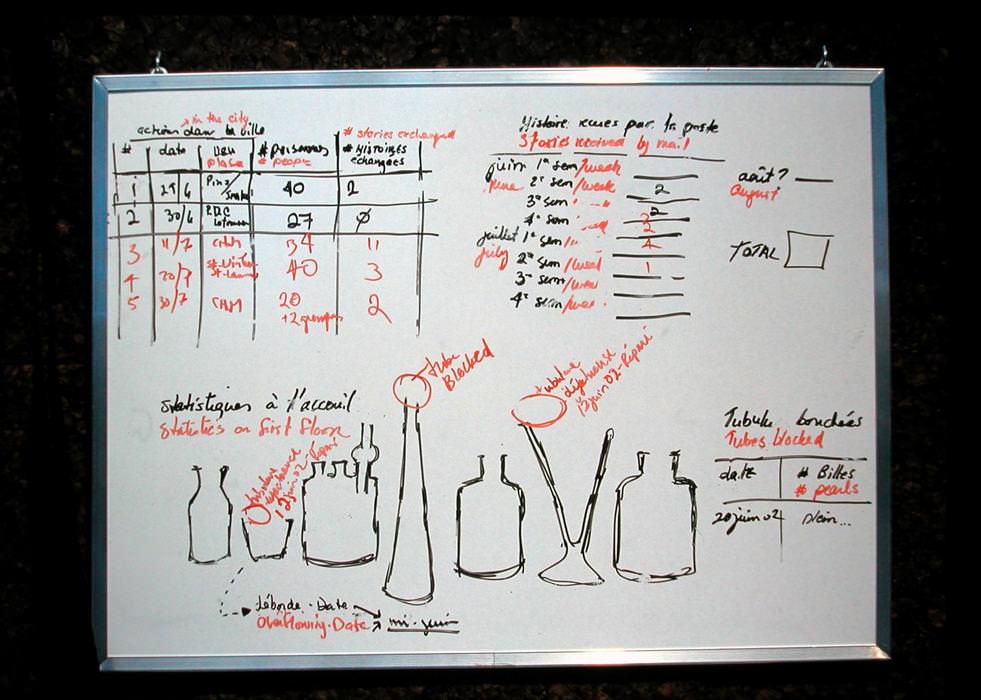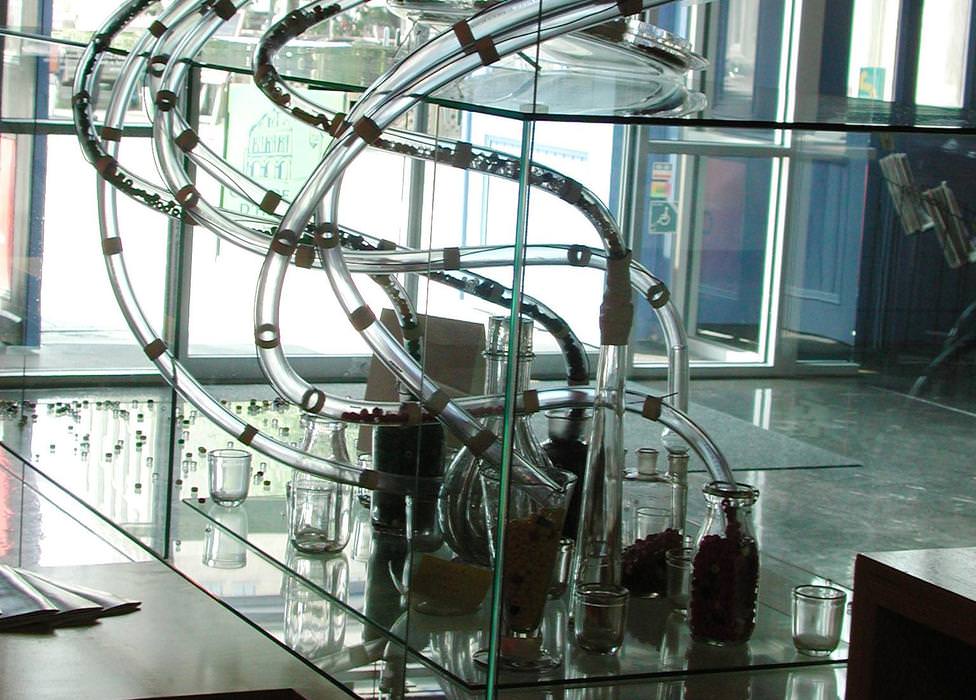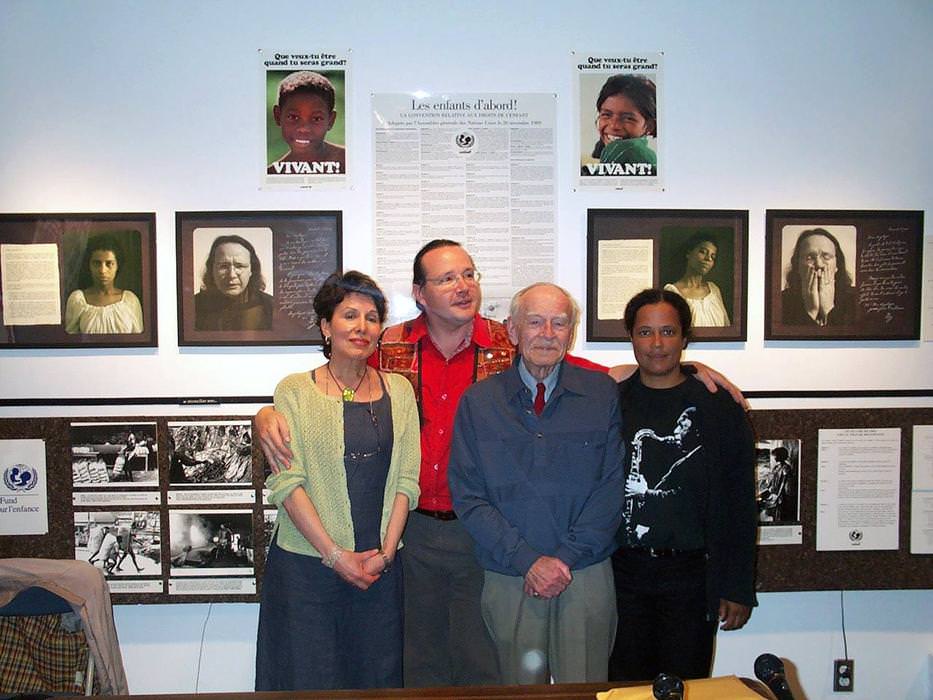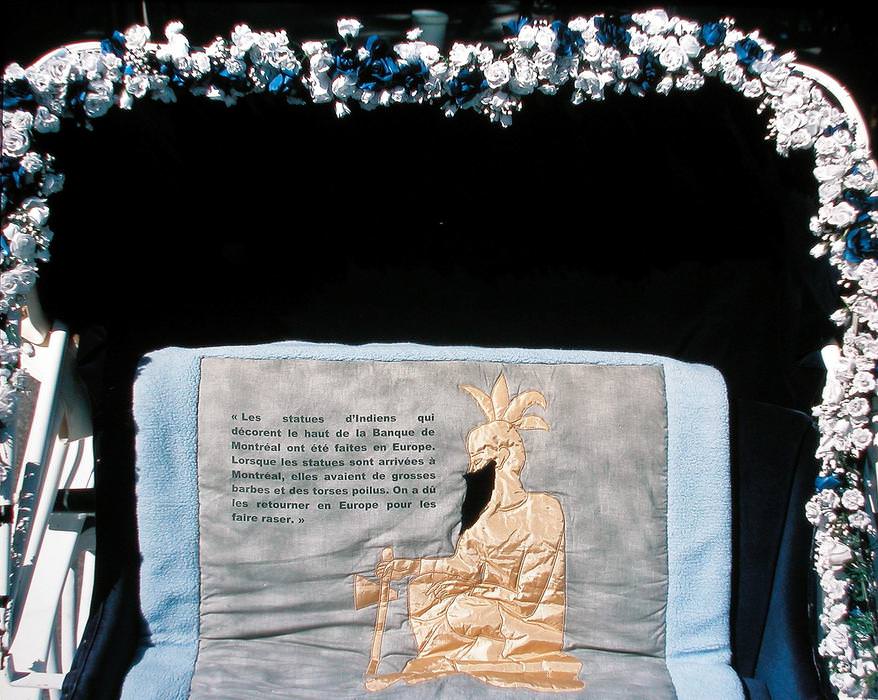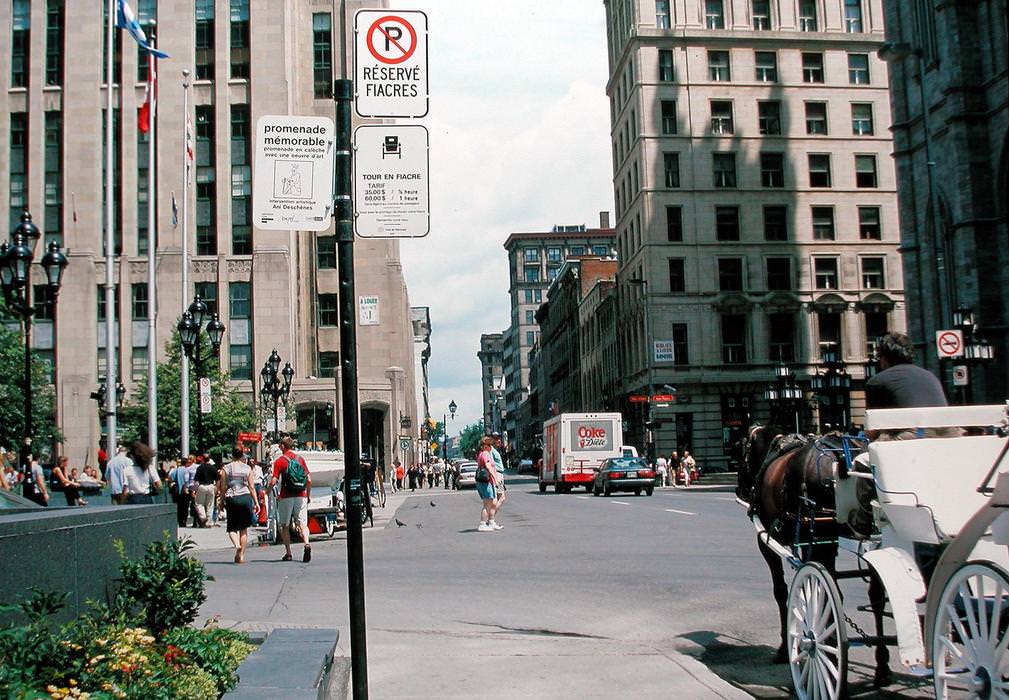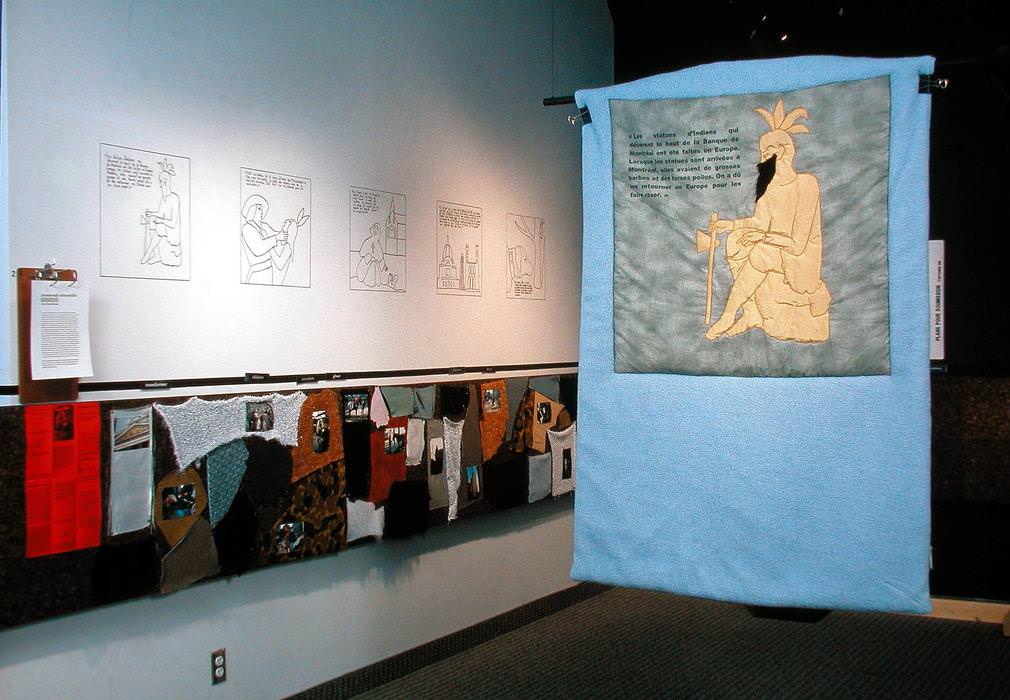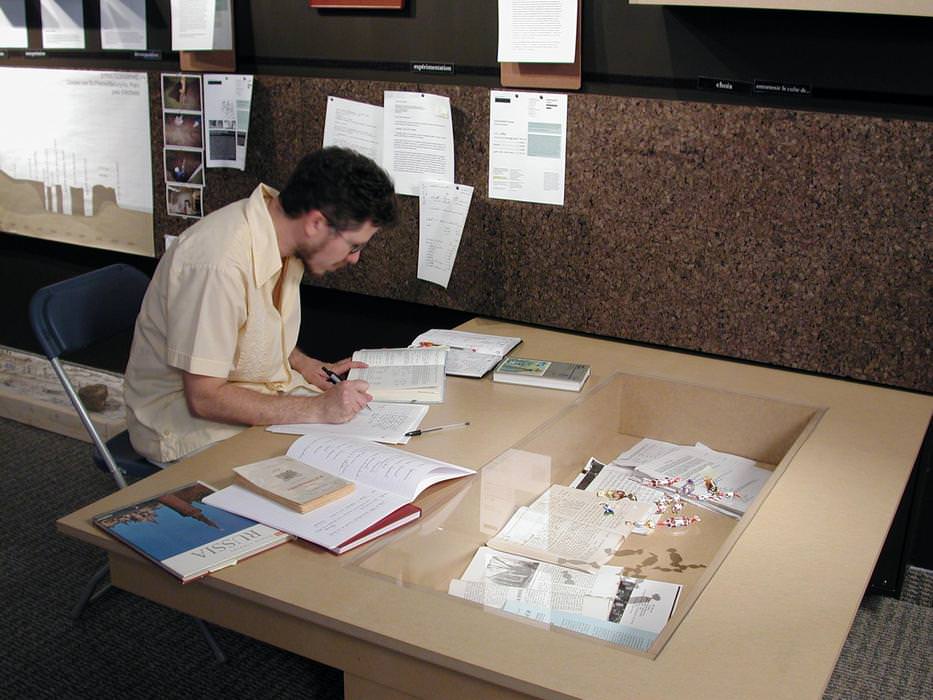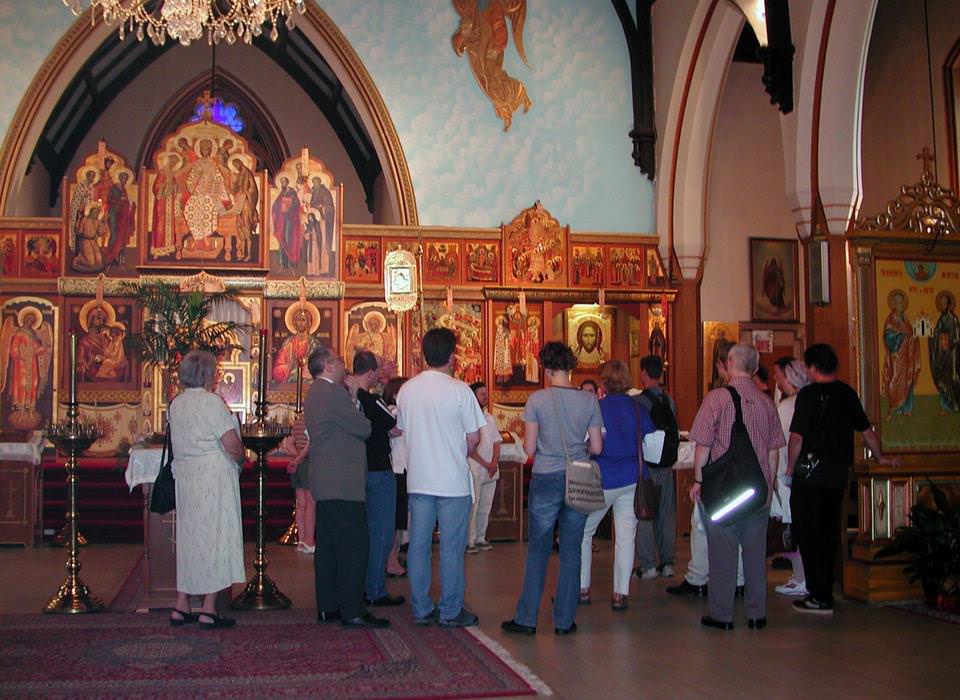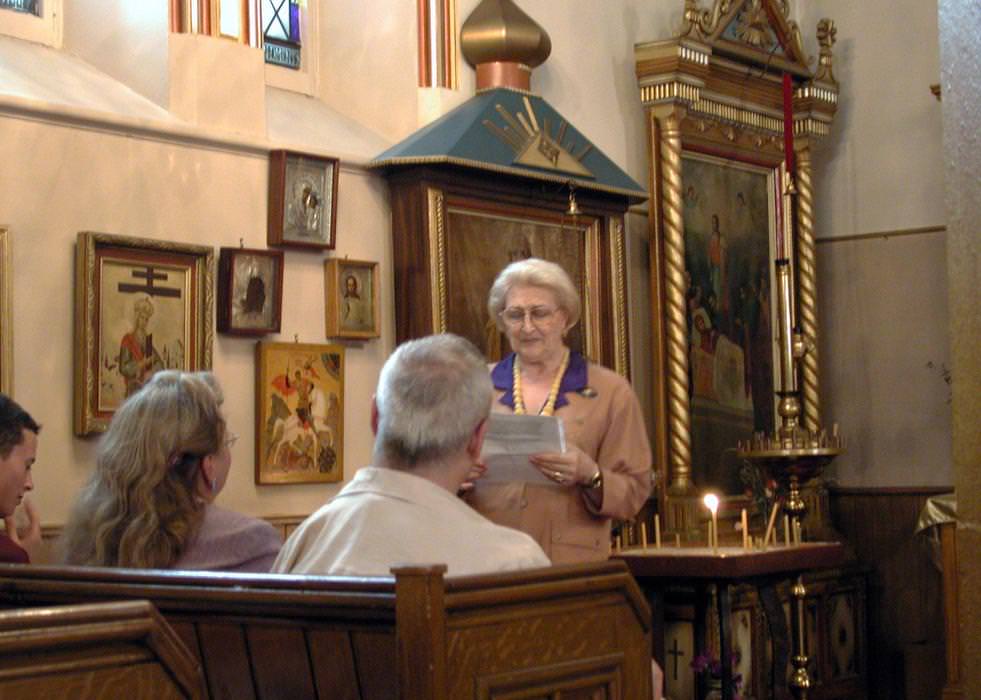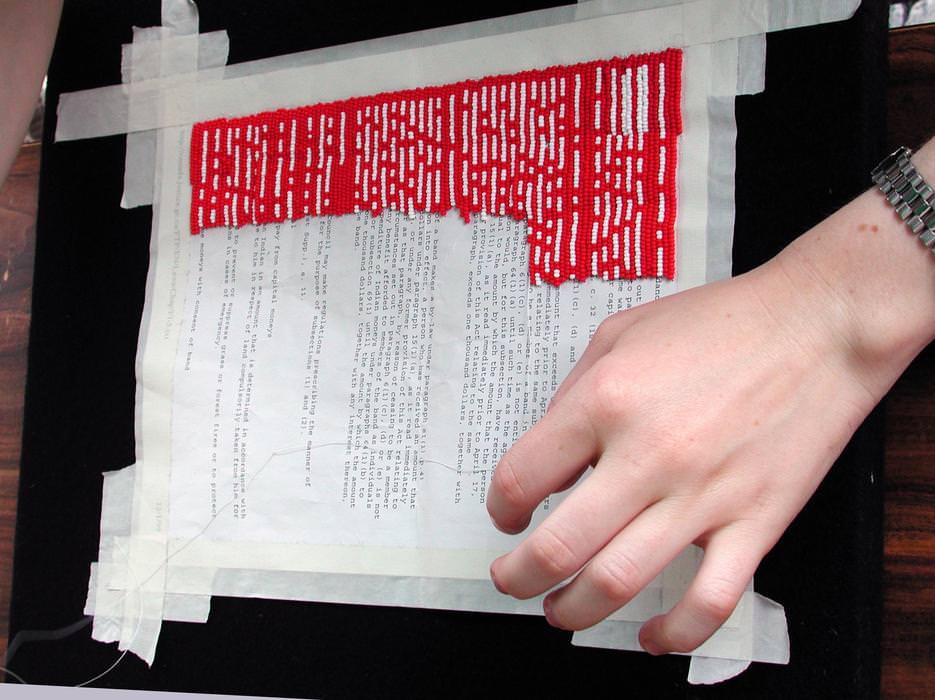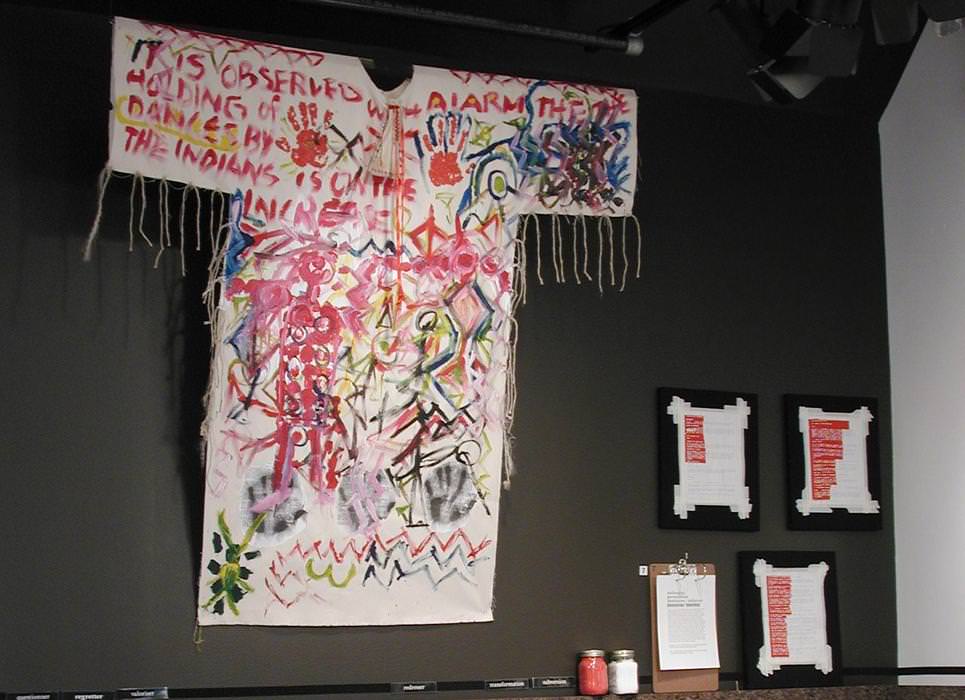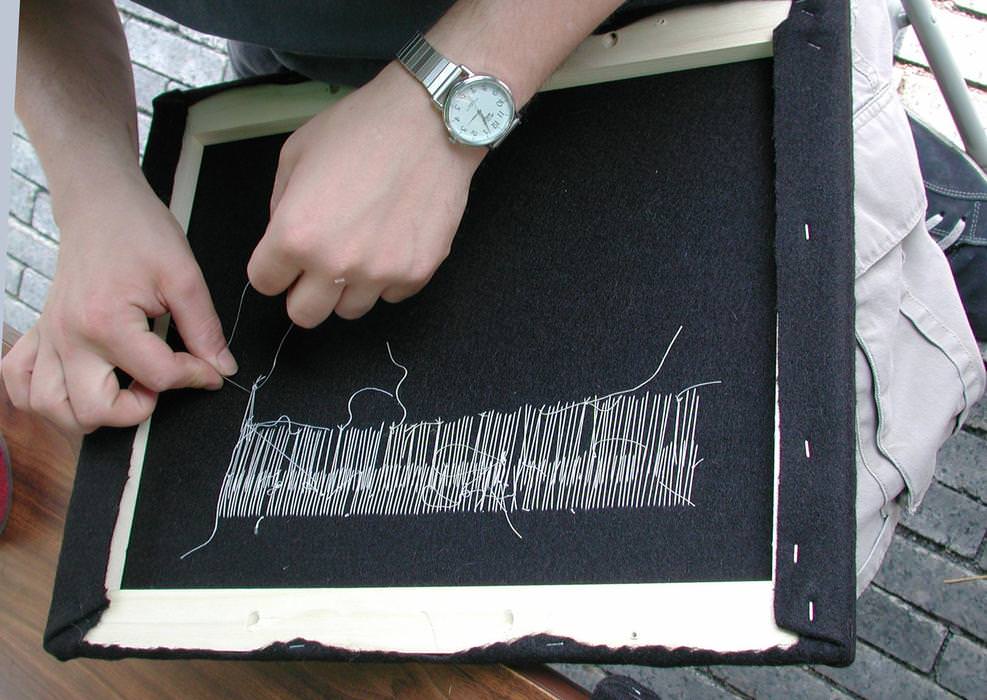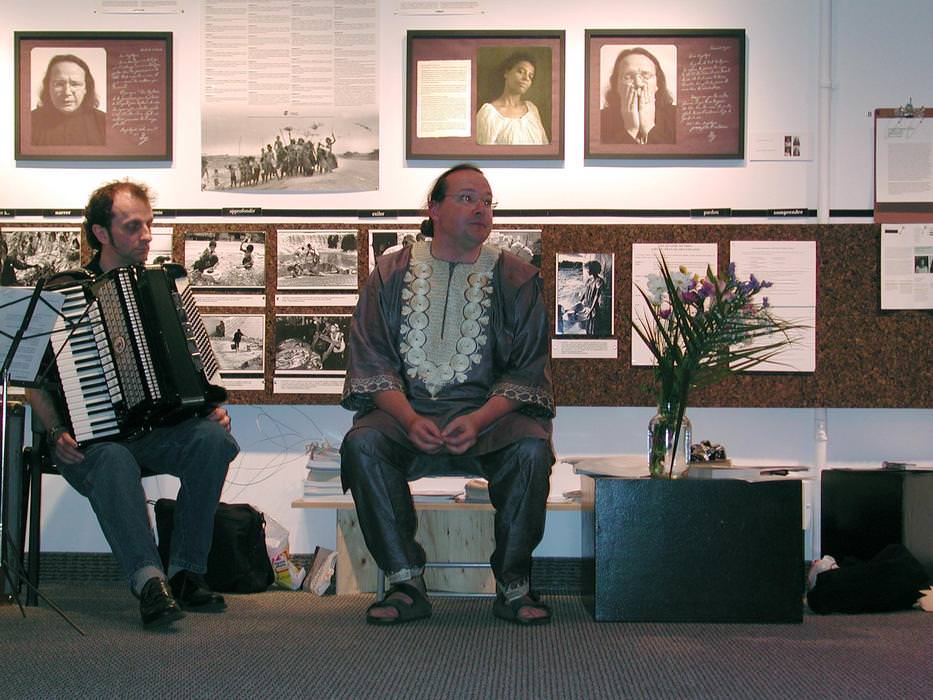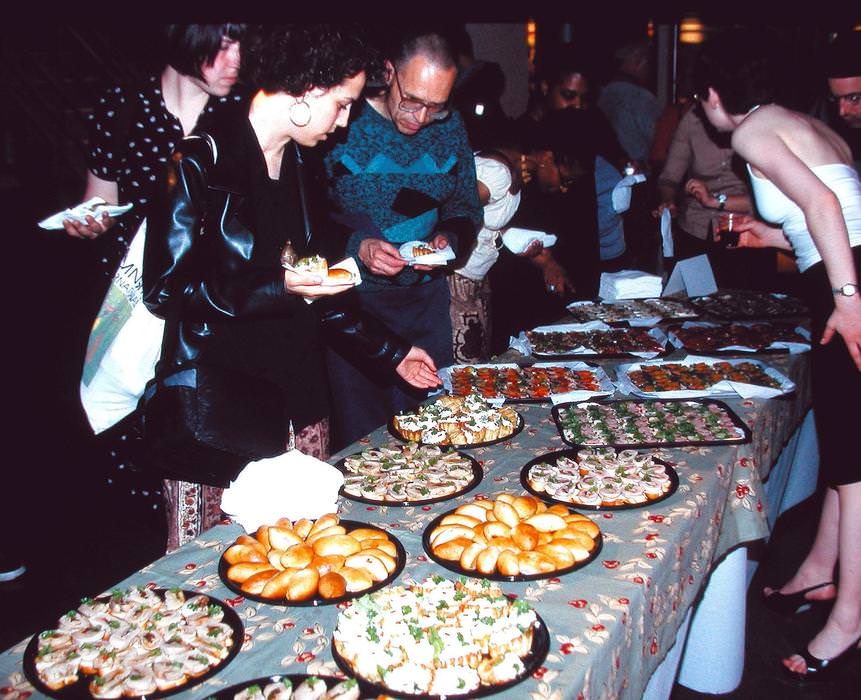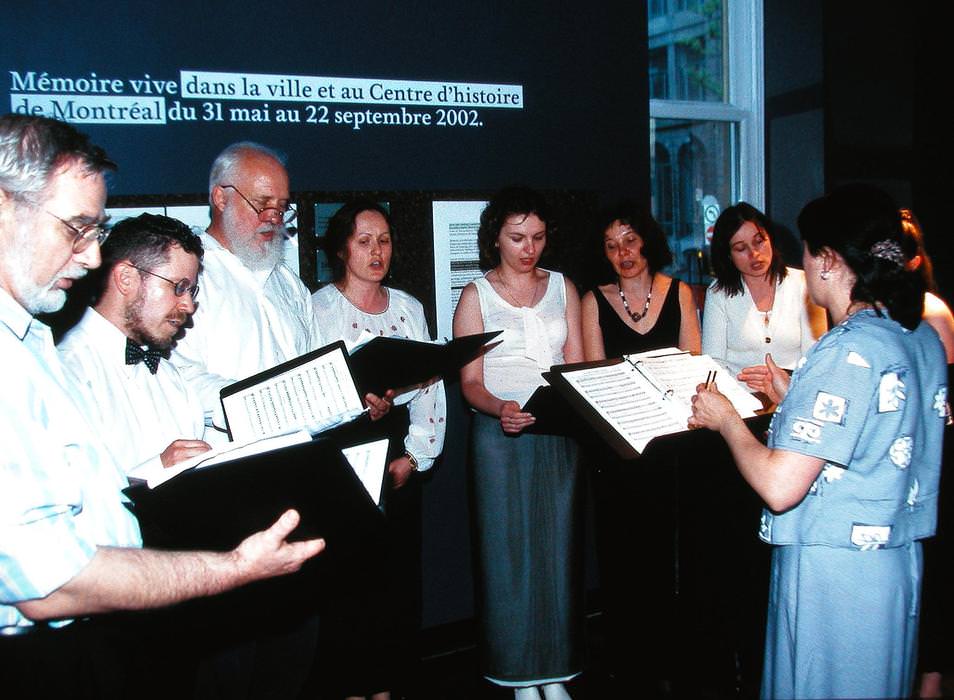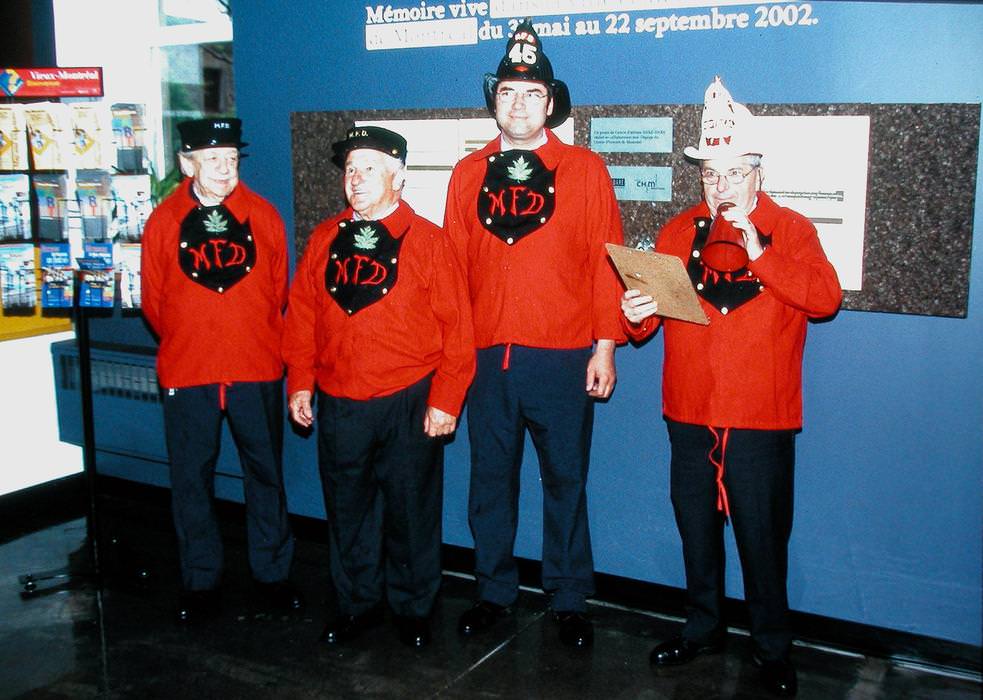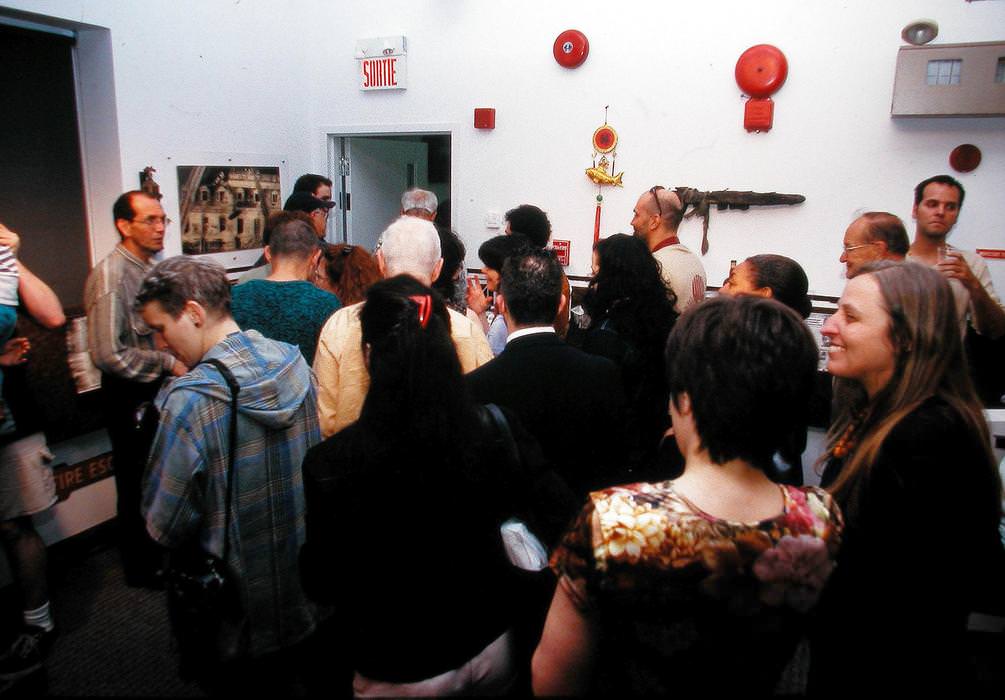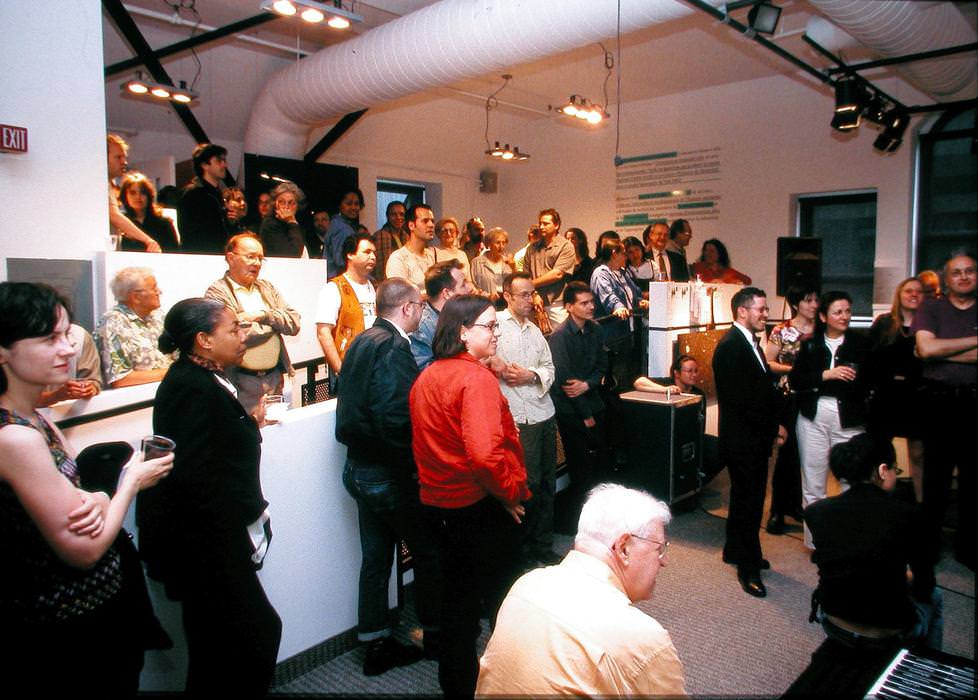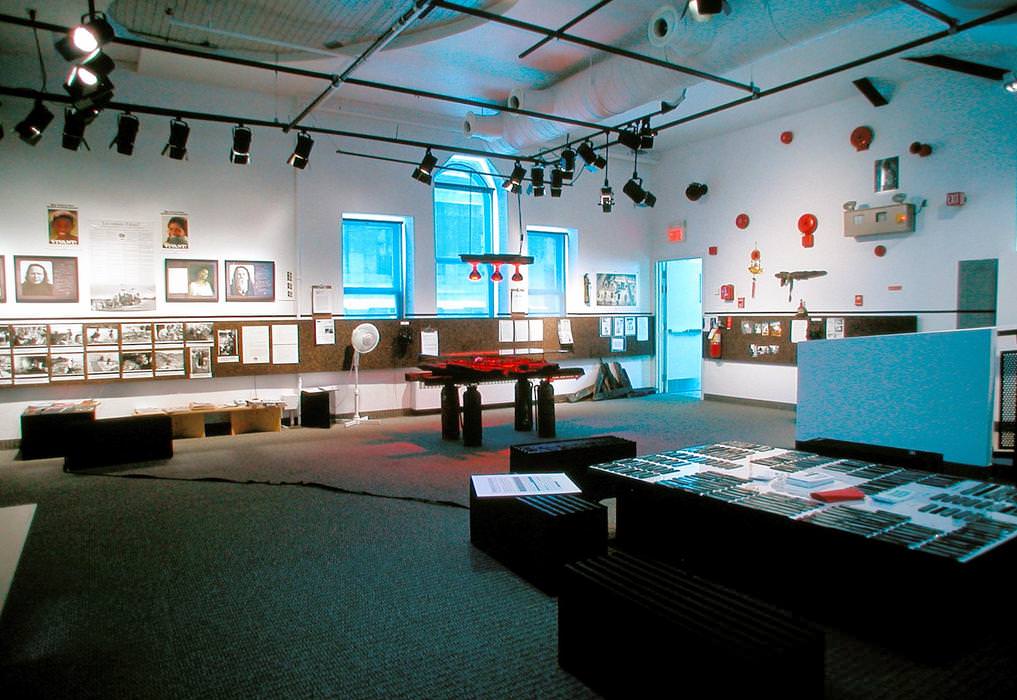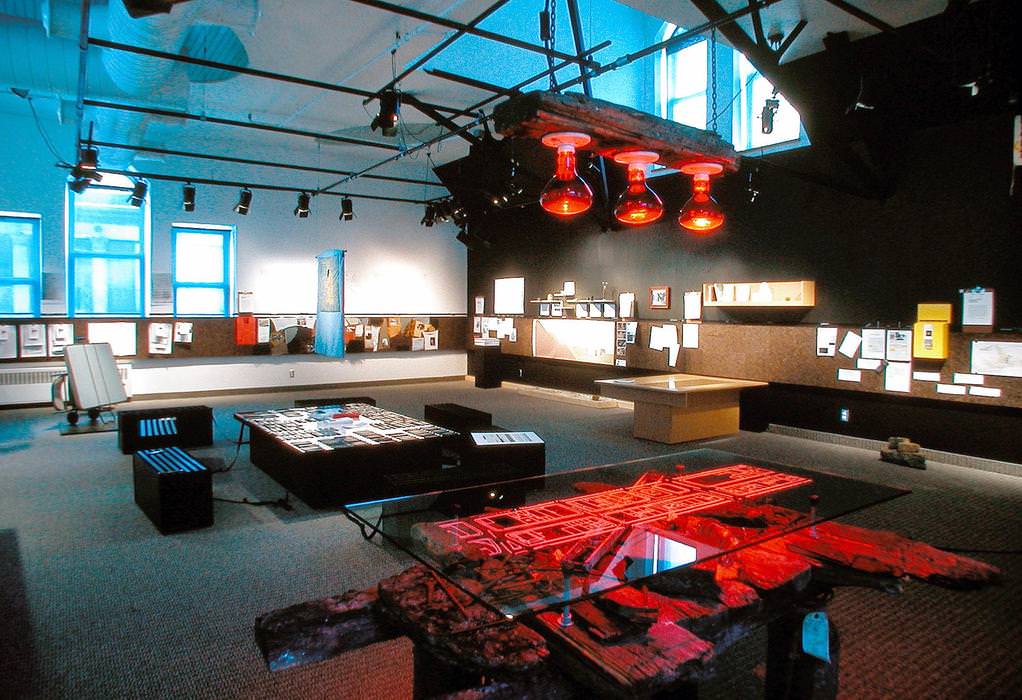Programming
Mémoire vive
Initiated by DARE-DARE in collaboration with the Centre d'histoire de Montréal, Mémoire Vive provided a framework for reflection that brought together artists and stakeholders in the heritage field.
Guy Giard
Dans son travail de création, Guy Giard explore les liens intangibles qui unissent les gens par le partage d'une expérience commune tel le déracinement, la violence, l'isolement.
Ani Deschênes
Le travail d'Ani Deschênes cherche à révéler l'humain dans ses attitudes et comportements en s'insérant, comme un caméléon, dans notre milieu de vie, sur notre chemin par exemple, à la bibliothèque publique, dans le stationnement d'un parc nature, lors d'une visite en calèche dans le Vieux-Montréal.
Mireille Cliche
Histoires oubliées a pour but d'évoquer d'humbles histoires et de réveiller des émotions grandes ou moins grandes pour ouvrir les portes du souvenir à ceux qui l'ont perdu, en des endroits où la mémoire a été effacée.
Caroline Boileau
Symptômes relocalisés, le projet qu'elle développe pour Mémoire vive, s'intéresse à l'histoire de la santé publique à travers les faits, les statistiques et les publicités de médicaments qu'elle a trouvées lors de recherches en archives.
ATSA - Action Terroriste Socialement Acceptable
Du 9 août au 2 septembre, Les murs du feu propose une exploration de la Main (boul. Saint-Laurent) à travers ses incendies. Le projet se déroulera en deux temps, lors d’une soirée incendiaire le vendredi 9 août et dans le cadre d’un trajet piétonnier.
Internationale Virologie Numismatique
Horatio Nelson: 1758-2002 est une intervention orchestrée par l'Internationale Virologie Numismatique (IVN), une désorganisation qui s'intéresse à la subversion et au détournement des concepts de pouvoir, d'aliénation et d'oppression.
Denis Lessard
Denis Lessard se penche sur les conditions d'immigration et de vie de la communauté russe montréalaise, marquée par une diversité de classes, de religions, de convictions politiques et d'expériences antérieures d'immigration.
Terres en vue / Nadia Myre
À travers la démarche artistique attentive de Nadia Myre, qui reprend la technique traditionnelle du perlage pour oblitérer le texte de la Loi sur les Indiens, une révélation s'actualise et jette un éclairage radical sur le clivage entre l'intention légaliste et la réalité.
La charrette
Une session intensive de travail en équipe où se sont rencontrés des intervenants de différents domaines pour proposer des idées sous forme de projets, à partir d’une problématique précise.
VLAN Paysages
VLAN paysages continue son exploration des sites laissés au hasard des mutations de la ville, perçus comme autant de cases-mémoire urbaines qui conservent et dévoilent, par leur vide, des traces et des couches d'usage, des unités de paysages passées ou présentes.
View more
Initiated by DARE-DARE in collaboration with the Centre d'histoire de Montréal, Mémoire Vive was a framework for reflection in which artists and heritage workers were called upon to share working and investigative methods, strategies, means of intervention and ways of shaping history in order to initiate and carry out actions in the city to activate its memory and make it their own. It was a laboratory, a site of trials, ideas and actions addressed to a public caught on the streets of Montreal, as well as to visitors to the Centre d'histoire and to the visual arts and history interpretation communities. The event took place from May 31 to September 22, 2002.
Presentation
The intention: around questions that lead us to rethink the relationship between memory, communities and the city, to bring together artists, creators and professionals of history. How is memory constructed? How does it exist in the urban fabric? How is it transmitted within communities? For what and for whom does it serve? From there, Mémoire vive draws a framework for reflection where artists and heritage professionals are called upon to share work and investigation methods, strategies, means of intervention and ways of shaping history in order to initiate and carry out actions in the city to activate its memory and appropriate it. It is a true laboratory, a site of trials, ideas and actions addressed to a public caught on the streets of Montreal, as well as to visitors to the Centre d'histoire and to the visual arts and history interpretation communities.Each of the projects presented as part of Mémoire vive has its own logic. They take place over time or on an ad hoc basis, layering, overlapping or following one another. Many occur spontaneously according to a flexible or even indeterminate schedule.
Mémoire vive events, which constitute a program in themselves, will be unveiled gradually throughout the summer on the DARE-DARE website, as well as through the distribution of communiqués and monthly mailings. At all times, from May 31 to September 22, 2002, Mémoire vive will occupy the Centre d'histoire de Montréal, where the temporary exhibition room will be transformed into an evolving laboratory. Many of the participants also intervene in the permanent exhibition, creating alternative paths.
DARE-DARE initiated the Mémoire vive adventure in September 2001. The research and production stages were punctuated by regular meetings and discussions, according to the needs and avenues explored by the artists and creators, with the teams of DARE-DARE, the Centre d'histoire de Montréal and specialists in archaeology, geology, urban planning and history.
The participants in Mémoire vive have been chosen to bring together diverse and complementary approaches and attitudes. Thus, memory is brought to life through oblique viewpoints where we can distinguish, for example, the spirit of the poet, the scientist, the documentalist, the activist, the detective, the utopian, the immigrant, the uprooted person, the caregiver. But the approach of each one surprises, drifts, is transformed and opens towards something larger which remains difficult to name and identify. From an old working-class neighbourhood to Old Montreal, from a tour of the city in a horse-drawn carriage, from the church of a Russian Orthodox community to an archaeological dig site, a whole re-reading of the history of the city and its social fabric takes place, in a back-and-forth movement between the self and the other, the individual and the community, the conscious and the unconscious, the past and the present. In this process, memory is thought of as a link that allows us to move away without losing ourselves, to navigate between, to find our bearings and to know ourselves again.
- Raphaëlle de Groot
Instigator and coordinator of Mémoire vive
The origin of the project
Exploring the city. In the public domain: to act to sow doubt, to fight against indifference, to make gestures and go to meet the Other. To risk. These are some of the reasons why DARE-DARE has been actively supporting urban practices since its mandate was changed in 1996. This new orientation gives rise to a reflection on the meaning that emerges from unconventional creative processes and contexts. In order to deepen this research, DARE-DARE develops, through its regular programming and special projects, flexible production and dissemination structures where exchange, encounter and experimentation are at the forefront.
It is this approach, as well as her occasional involvement with the Centre d'histoire de Montréal, that led Raphaëlle de Groot, artist and member of DARE-DARE, to propose Mémoire vive, a laboratory where artistic investigation is linked to historical inquiry to produce personal rereadings of the city's history. In continuity with L'algèbre d'Ariane, an international exchange and cooperation project initiated by Stéphane Gilot and Caroline Boileau in 1997, Mémoire vive is part of DARE-DARE's desire to reach multiple audiences and to develop collaborations with institutions, organizations and individuals. In fact, this is perhaps where the most experimental dimensions of the project lie. By provoking this type of creative context, DARE-DARE builds a reflection on the field and is constantly nourished by the questions raised by interaction with new audiences.
Mémoire vive is also motivated by the ever-renewed desire of DARE-DARE members to push the boundaries of art by engaging in destabilizing and disorienting experiences. This is true both through the context of dissemination offered by the Centre d'histoire de Montréal and through the creative process implemented. Indeed, by bringing together artists and creators from several fields (landscaping, interdisciplinary practices, performance, literature, engaged art) and by soliciting, at different stages of research, production and presentation, the collaboration of the Centre d'histoire team as well as professionals and stakeholders from the world of archaeology, geology, archives, history, urban planning, philosophy, humanitarian organizations, cultural communities, and many other sectors; The projects of Mémoire vive artists develop unexpected ramifications that sometimes take us outside the traditional field of art. Seen in this way, Mémoire vive takes the form of a multidimensional adventure where, in parallel to the projects and themes of each of the participating artists and creators, the public is invited to reflect on the very process of rereading, interpreting and appropriating historical information and data; a process fueled here by the encounter of a diversity of viewpoints, attitudes, biases, means and strategies.
- Raphaëlle de Groot
Instigator and coordinator of Mémoire vive
DARE-DARE, Centre de diffusion d'art multidisciplinaire de Montréal
About the instigator of the project
Raphaëlle de Groot completed a BFA at the Université du Québec à Montréal and at Purchase College in New York in 1997. A young Montreal artist, she has been actively exhibiting since 1996 while being involved with DARE-DARE, a multidisciplinary artist-run center. Her creative work investigates memory both on the scale of the individual, as a process of identity, and on the scale of the community, as an issue in contemporary society.
In parallel to her artistic projects, she developed an interest in museology through an internship in the arts (FCAR Fund grant, 1998-99). This experience led her to collaborate with the Centre d'histoire de Montréal on two occasions: in 1999, the Centre invited her to create an urban intervention on the occasion of the 150th anniversary of the burning of the first Parliament of the United Province of Canada, and in 2000, it entrusted her with the creation of a temporary exhibition on the history of women workers in private homes. This project, named Plus que parfaites. Chronicles of Work in Private Homes 1920-2000, traces the invisible history of maids, nannies and housekeepers through a collection of testimonies and extensive documentary research, while actively involving current caregivers in the creation of a gesture of memory.
Her personal research, her involvement with DARE-DARE and her experience working at the Centre d'histoire led her to propose Mémoire vive, a project that gives other artists and creators the opportunity to familiarize themselves with the historical process and to attempt a personal rereading of the city's history.
The game of exploration
History is alive and well in the city today. This is the vision and approach that have motivated the team at the Centre d'histoire de Montréal since it was founded in 1983, and more particularly since the 2001 redevelopment of the building and its permanent exhibition located in the heart of Place d'Youville. The CHM's activities are thus oriented towards an exploratory approach that is tied to the city, both in its urban and social fabric. The "new" Centre d'histoire is conceived as a gateway to the city to discover the places and traces of its history, its neighbourhoods and the people who live there. Beyond its mission to disseminate Montreal's heritage, the Centre d'histoire de Montréal seeks to play a concrete social and community role, making its exhibition spaces accessible and useful, and evolving with the community that animates them. For its exhibition projects, the CHM has also been partnering for the past few years with organizations, groups and associations that reach out to specific cultural fields, audiences or territories. By creating links, these alliances develop a sustainable approach and promote a reciprocal taming, a real "intercultural" exchange in all senses of the word between diverse environments and individuals.
Bringing together artists, creators and workers in the field of history, the Mémoire vive project, carried out in collaboration with the DARE-DARE gallery, is part of this approach by proposing a game of rereading and free appropriation of history and its inscription in the city. For the participating artists and creators, it is a question of taming the historical approach and historical communication intended for the general public; for the CHM team, accustomed to explaining and describing, Mémoire vive invites them to leave a little room for the ambivalence of evocation, the indeterminate and even silence, which are the artists' preferred materials. In short, for both artists and interpreters of history, an adventure, so that memory may live on.
- Jean-François Leclerc
Director of the Centre d'histoire de Montréal
www2.ville.montreal.qc.ca/chm/chm.htm

Programming
MAY 31, 2002 :
Living Memory opening event, 5:00 pm at the History Center
FROM MAY 31 TO THE END OF MÉMOIRE VIVE :
Living Memory Laboratory in the temporary exhibition room of the History Center
Interventions in the permanent exhibition of the History Center:
Horatio Nelson 1758-2002, IVN
Relocated Symptoms, Caroline Boileau
Angélique 1734, Guy Giard
Other interventions will be added along the way
JUNE 12 :
Noilamgyp, Land in view, performance on the History Center forecourt, 2:30 pm
JUNE 15 :
Angélique 1734, Guy Giard, Geste de mémoire, on the square in front of the History Center from 3 to 5 p.m. and thematic evening My Angélique in the Living Memory Lab at the History Center from 8 to 10 p.m.
JUNE 20, 21, 22 :
Indian Act, Nadia Myre, at the History Center from 11 a.m. to 3 p.m.
JUNE 23 :
Russian Montreal, guided tour at Saints Peter and Paul Church on the occasion of Orthodox Pentecost at 2:30 pm
JUNE 24 ONWARDS :
Memorable walk, Ani Deschênes, intervention in the carriages of Old Montreal
JUNE 27, 28, 29, 30 :
Indian Act, Nadia Myre, at the History Center from 3 to 5 pm
JUNE 30 :
Angélique 1734, Guy Giard, The Panis, native slaves, lecture by Marcel Trudel at the Centre d'histoire at 3 pm
JUNE and JULY SPONTANEOUS AND PUNCTUAL :
Relocated Symptoms, Caroline Boileau, sixteen action-encounters in public places
FROM JULY 1 FOR AN INDEFINITE PERIOD OF TIME
Horatio Nelson 1758-2002, IVN, intervention in Place Jacques Cartier
FROM JULY 2 TO 28 :
Histoires oubliées, Mireille Cliche, interventions in the Rosemont neighborhood
JULY 4 :
Histoires oubliées, Mireille Cliche, intervention at the community gardens located between Masson Street and Basile-Patenaude Square, from 5:30 pm to 8 pm (in case of rain, the next day)
JULY 7 :
Angélique 1734, Guy Giard, Le contexte social de la Nouvelle-France, lecture by Marcel Trudel at the Centre d'histoire, at 3 pm
JULY 14 :
Russian Montreal, Denis Lessard, guided tour of the Saints Peter and Paul church on the occasion of the patronal feast at 2:30 pm
Forgotten stories, Mireille Cliche, intervention at the Saint-Esprit church (corner of Masson and 6th avenue), from 11 am to 1 pm (in case of rain, on Sunday July 28, at the same time)
JULY 18 :
Histoires oubliées, Mireille Cliche, intervention at Le Pélican Park (corner of Masson and 1st Avenue), from 2 to 5 pm (in case of rain, the next day)
JULY 19 :
Backfill, VLAN Paysages, inauguration of the outdoor installation on Léo-Pariseau Street at the corner of Avenue du Parc, at the edge of the interchange, from 5 to 7 pm
JULY 24 :
Histoires oubliées, Mireille Cliche, intervention at the Centre Masson (2705, Masson), from noon to 3pm (postponed to the next day in case of rain)
JULY 23 TO AUGUST 11 :
Remblai-déblai, VLAN landscapes, exhibition in the Living Memory Laboratory, at the History Center
JULY 27 :
Fill-in-the-blank, VLAN landscapes, Talk, at the History Center, 2-5pm.
JULY 30 TO AUGUST 25 :
Russian Montreal, Denis Lessard, continuous screening of the film Le Christ est ressuscité by William Cunning, in the projection room of the History Center.
AUGUST 9 :
Les murs du feu, ATSA: incendiary evening starting at 8:30 pm, corner of Saint-Laurent and Sainte-Catherine
AUGUST 9 TO SEPTEMBER 22 :
Walls of Fire, ATSA, August 9: opening night of the urban circuit Walls of Fire, in place until September 2
AUGUST 17 :
Russian Montreal, Denis Lessard, guided tour of Little Russia
AUGUST 23 :
Remblai-déblai, VLAN paysages, poetry evening at the outdoor installation on Léo-Pariseau street at the corner of avenue du Parc, at the edge of the interchange
AUGUST 24 :
Russian Montreal, Denis Lessard, guided tour of Little Russia
AUGUST 27 TO SEPTEMBER 22 :
memorable walk, video and questionnaire "true or false", Ani Deschênes, in the projection room of the History Center
AUGUST 27 :
memorable walk, Ani Deschênes, exhibit in the Living Memory Lab at the History Center
SEPTEMBER 1 :
Russian Montreal, traditional Easter egg decorating demonstration, in the Living Memory Lab at the History Center
SEPTEMBER 2 :
Backfill, VLAN landscapes, backfilling at the outdoor facility on Léo-Pariseau Street at the corner of Avenue du Parc, at the edge of the interchange
SEPTEMBER 13 AND 14 :
Living Memory Charrette
SEPTEMBER 15 :
Living Memory Charrette and Round Table, public day at the Centre d'histoire de Montréal starting at 10 a.m. Relocated Symptoms, Caroline Boileau, presentation in the Living Memory Lab at the History Center at 5:30 pm
SEPTEMBER 12 :
Angélique 1734, Guy Giard, History of blacks in Quebec, lecture by Veronica Johnson
SEPTEMBER 18 :
Angélique 1734, Guy Giard, Interpreting Marie-Joseph Angélique, lecture by Micheline Bail and Martine Chartrand
SEPTEMBER 19 :
Angélique 1734, Guy Giard, From Haiti to Montreal, from a slave past to today, lecture by Claude Moïse
SEPTEMBER 20 :
Angélique 1734, Guy Giard, Slavery in 2002, lecture and thematic evening Angéliques today, lecture by Joanne Doucet
SEPTEMBER 22 :
End of Living Memory
Mémoire vive Initiator and Coordinator : Raphaëlle de Groot
Assistant to the Mémoire vive Coordinator : Alexandra McIntosh
DARE-DARE Administrative Coordinator : Marianne Thibeault
DARE-DARE Artistic Coordinator : Jean-Pierre Caissie
Exhibition Design : Marie-Suzanne Désilets and Geneviève Rousseau
Graphic designer : Patrick Pellerin
Web site design (2002) : Matt Killen
For this project, DARE-DARE receives financial support from the Fonds de stabilisation et de consolidation des arts et de la culture du Québec, the Canada Council for the Arts - Inter-Arts Office and the Du Maurier Arts Council.
DARE-DARE thanks its members, the Centre d'histoire de Montréal, the City of Montreal and its donors. The Centre receives operating support from the Conseil des arts et des lettres du Québec and the Conseil des arts de Montréal.
Visit the Centre d'histoire de Montréal website: www.ville.montreal.qc.ca/chm

